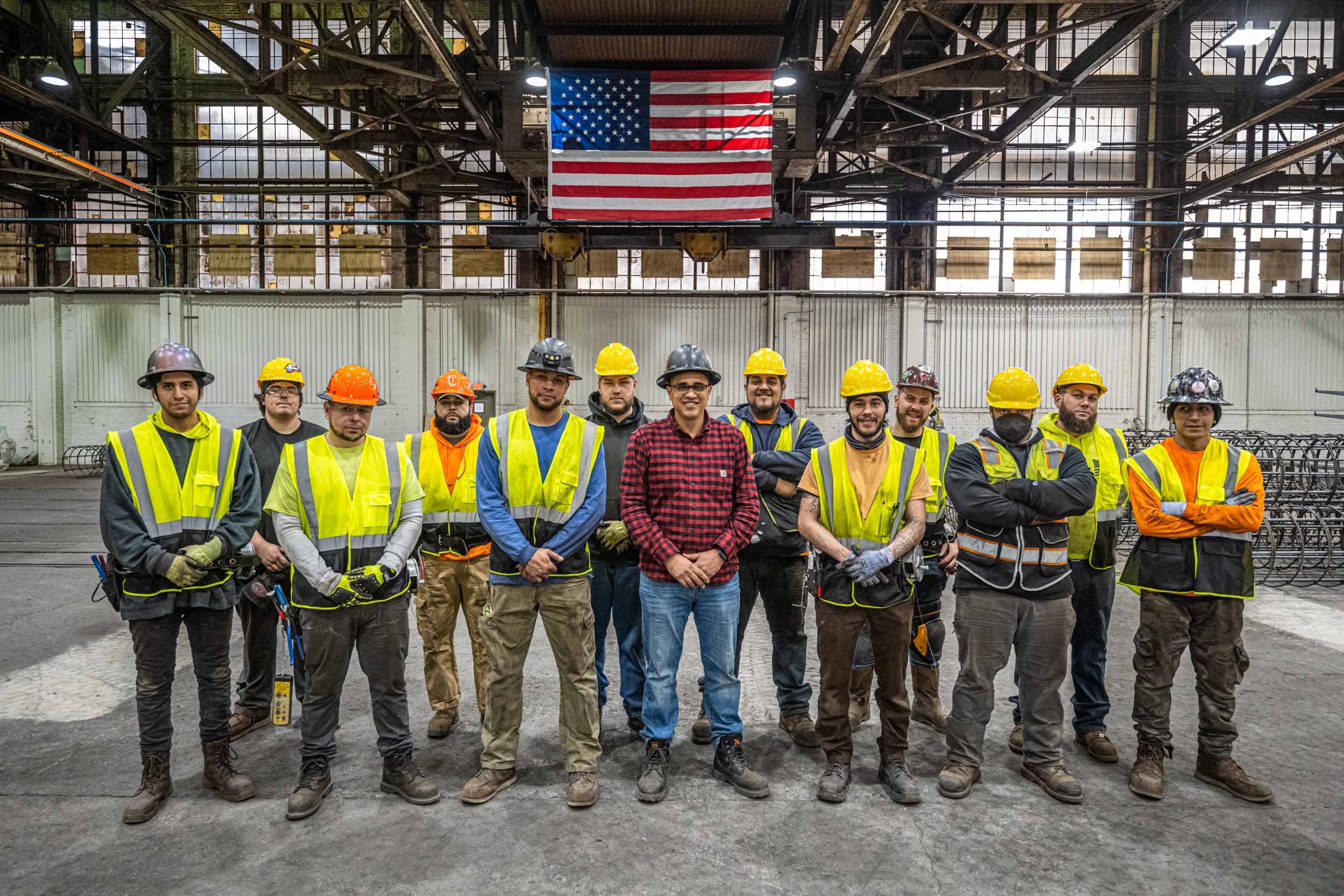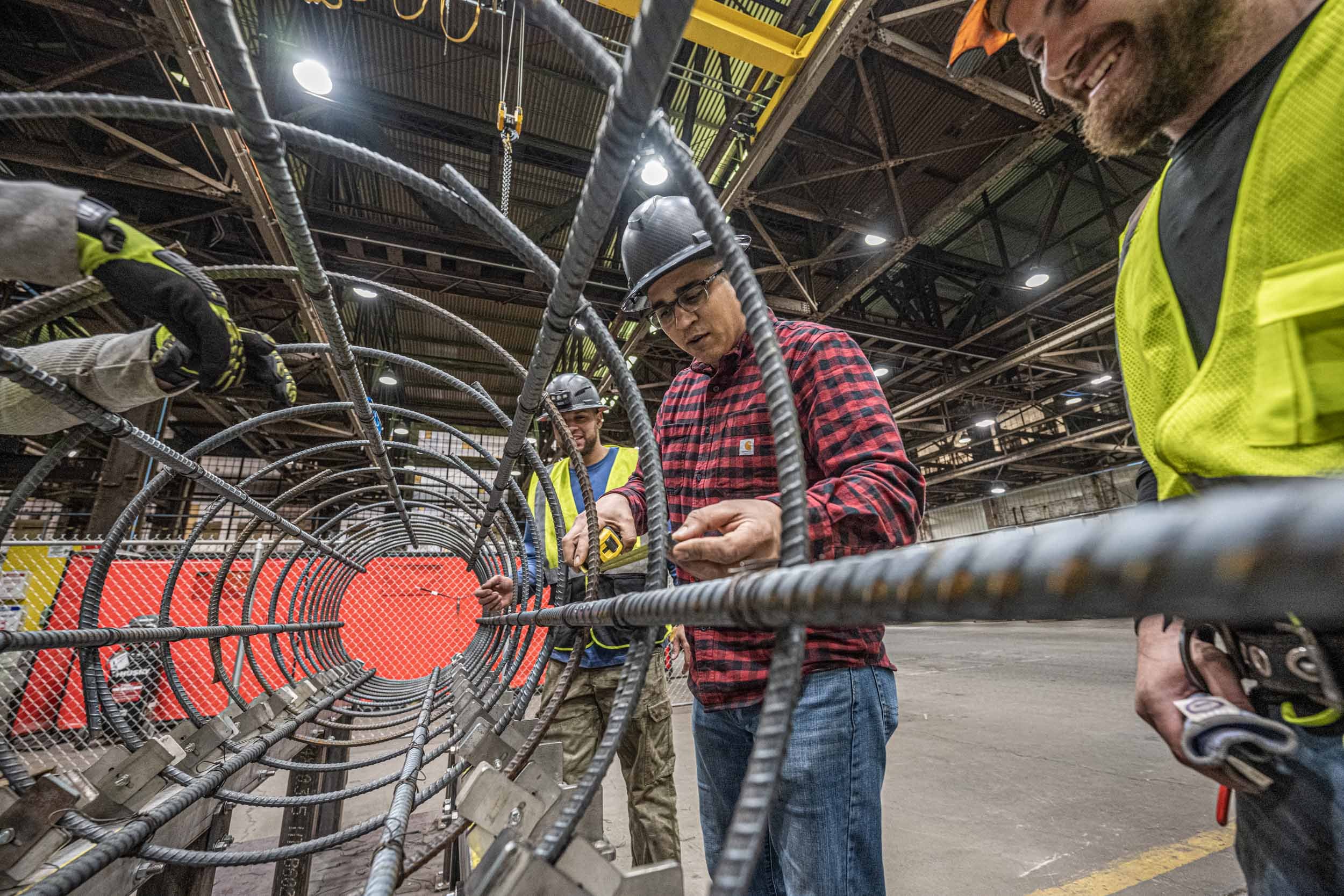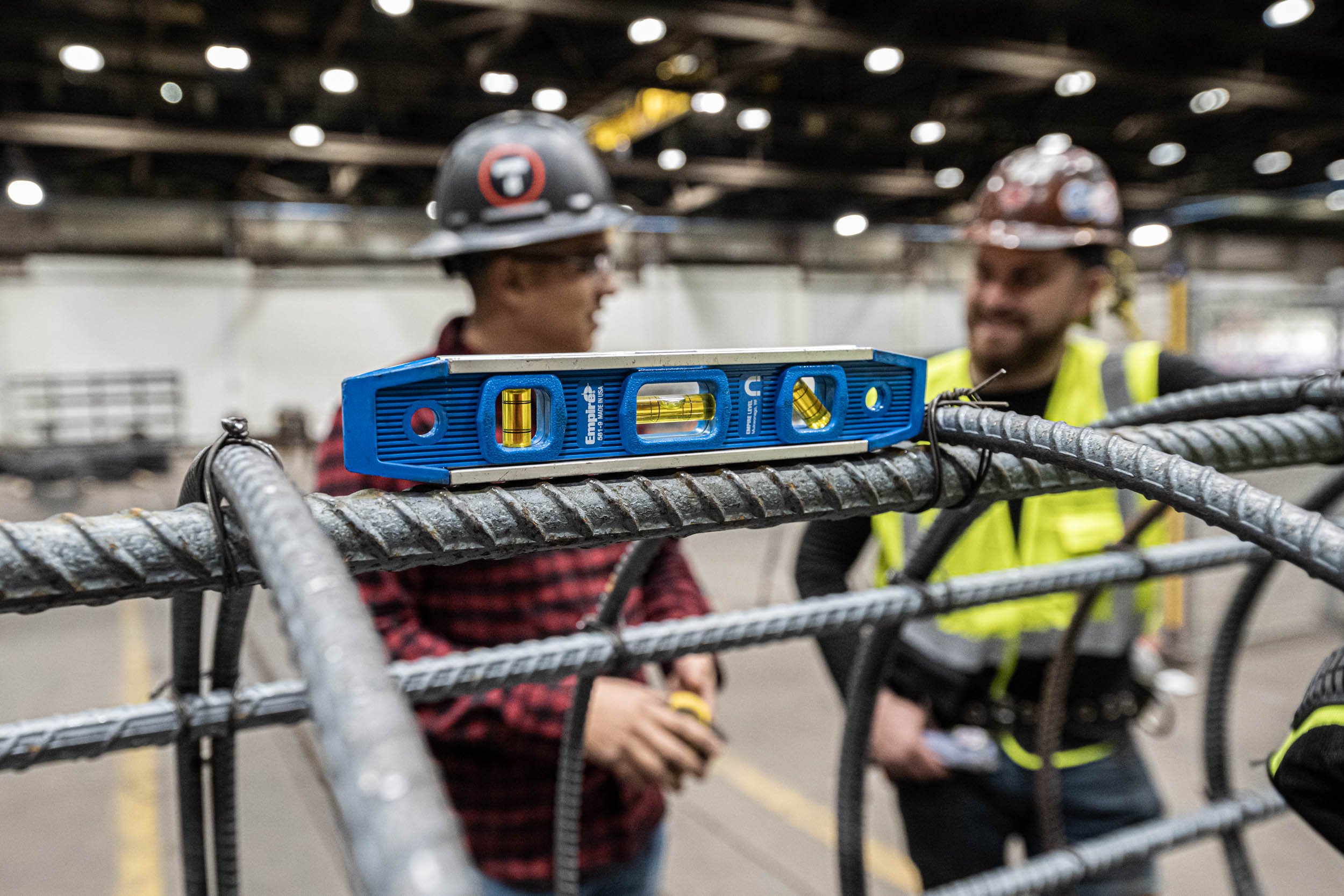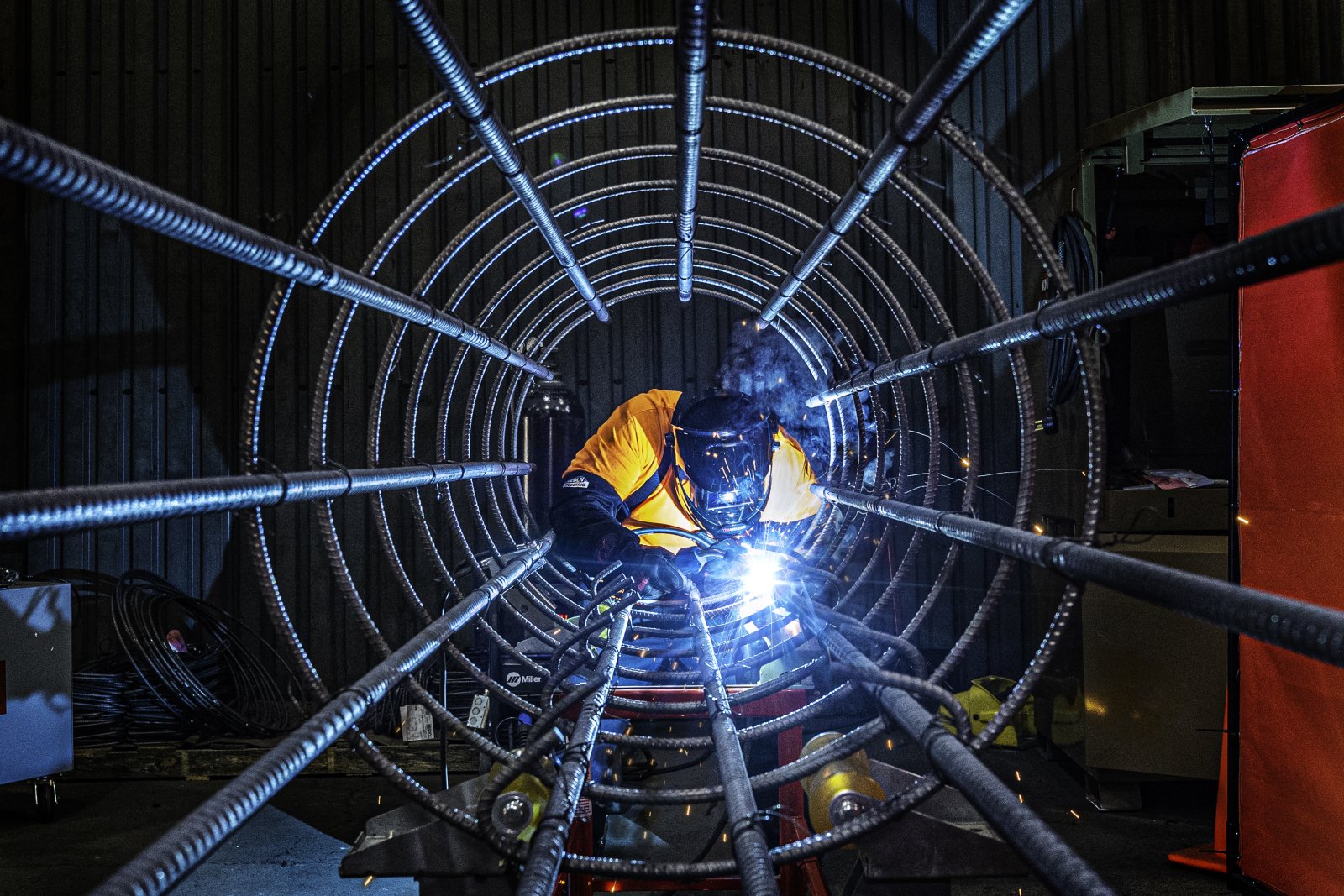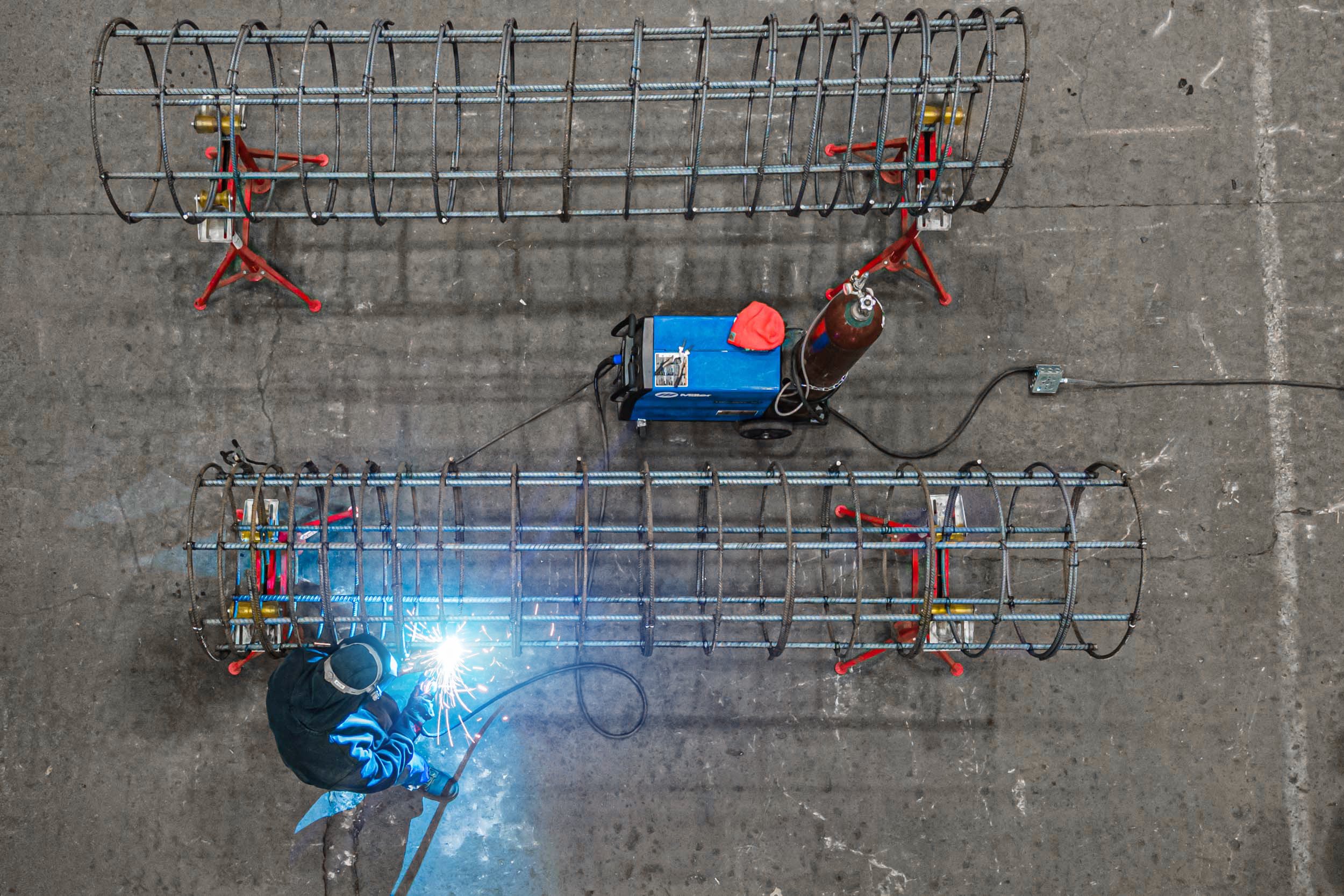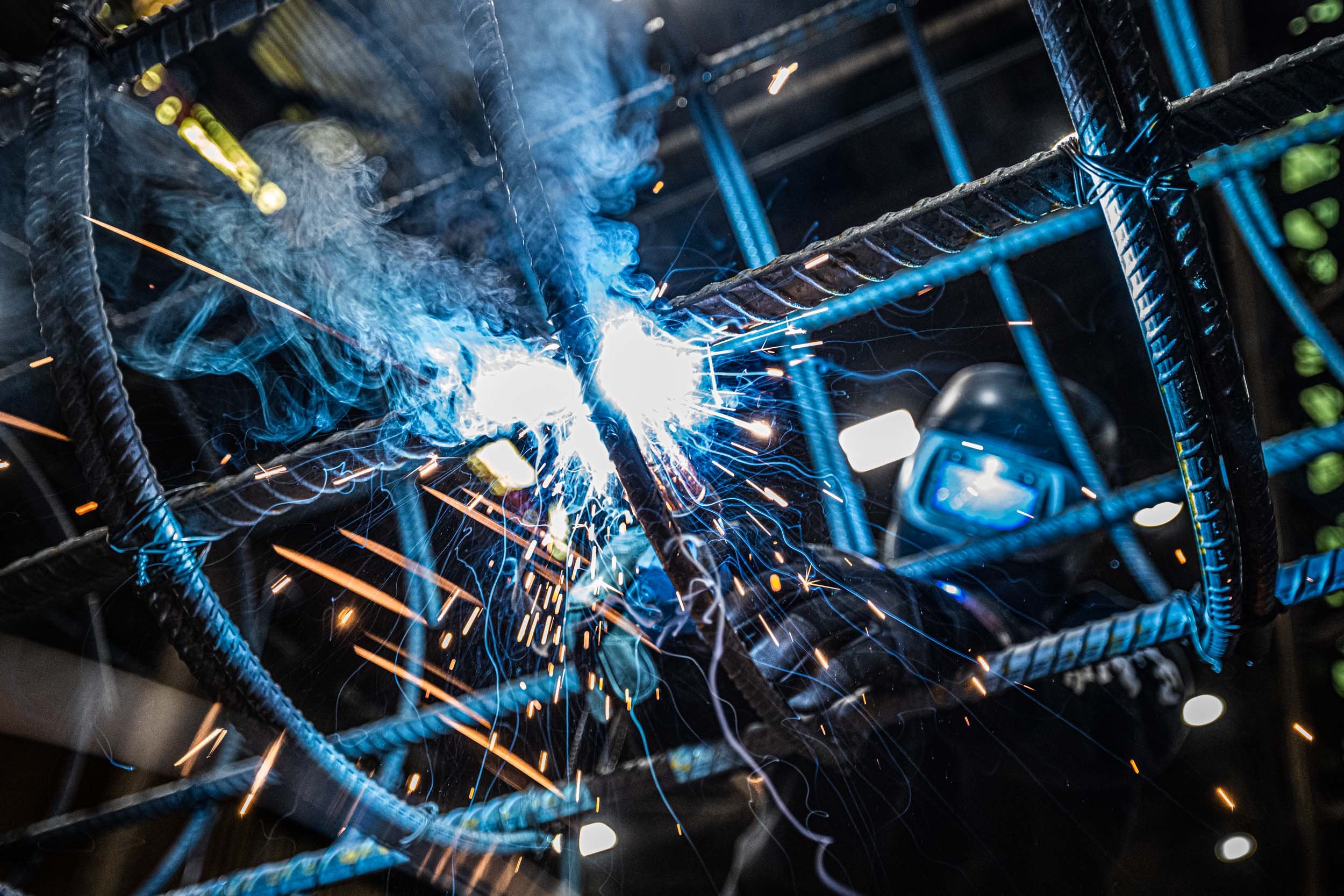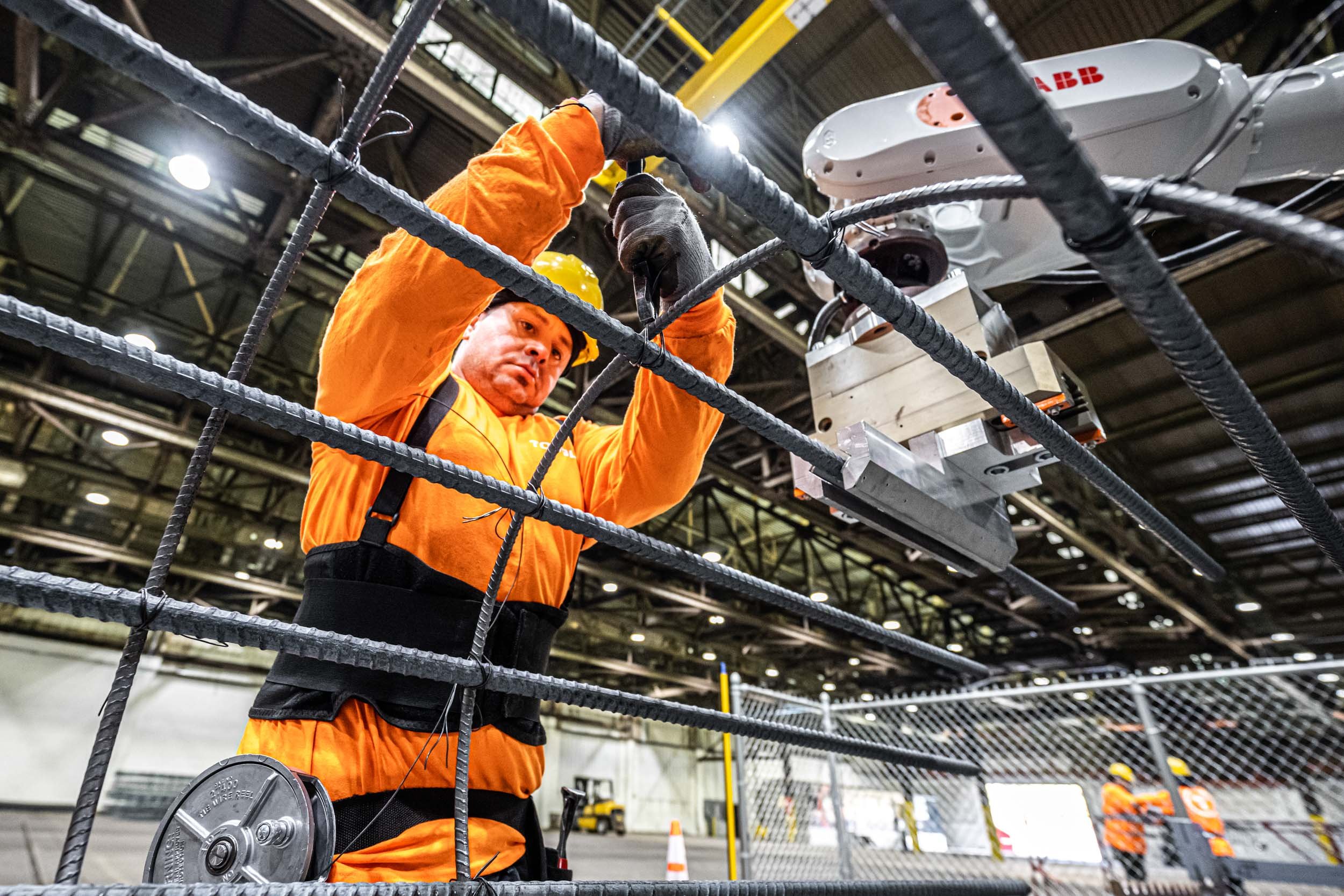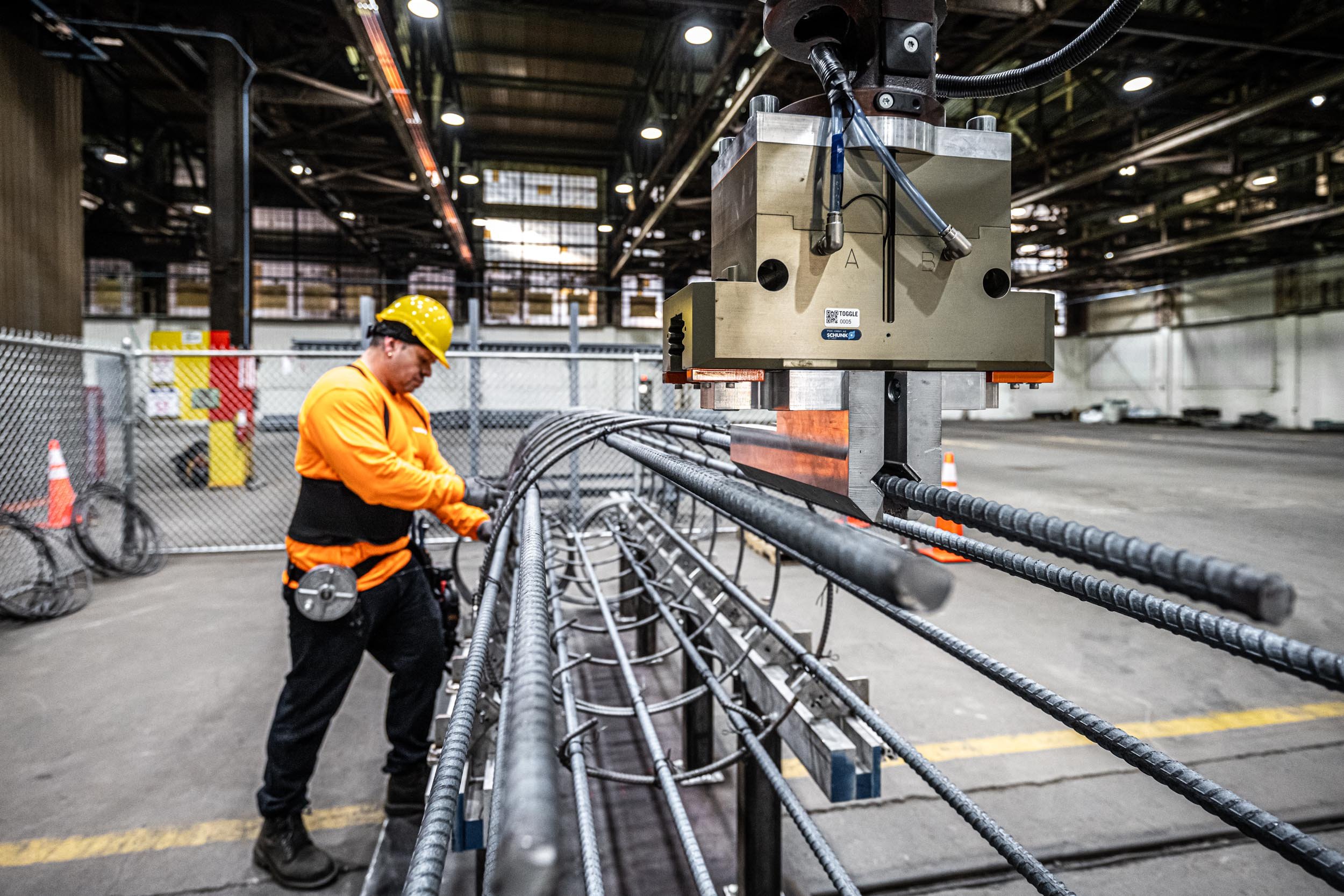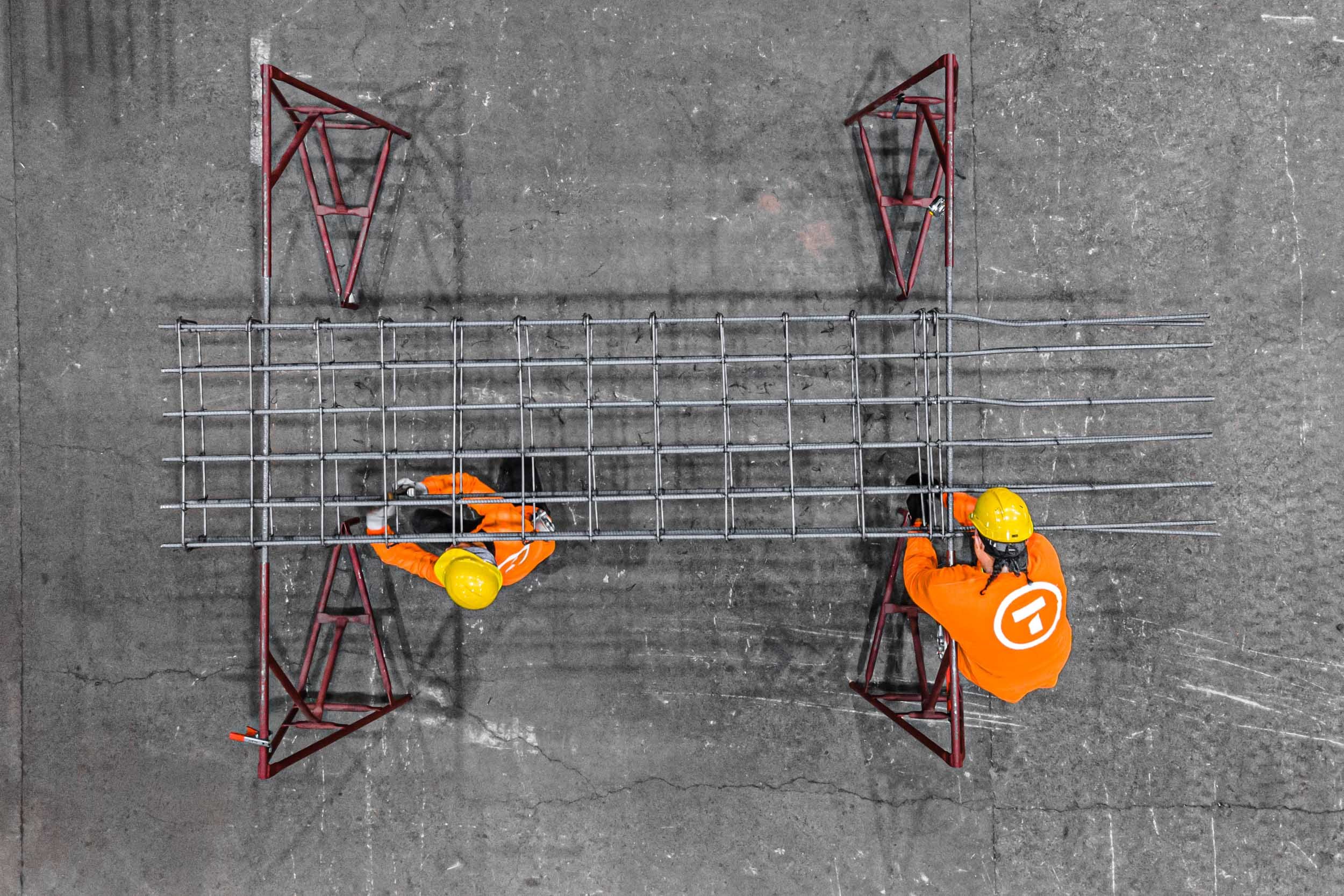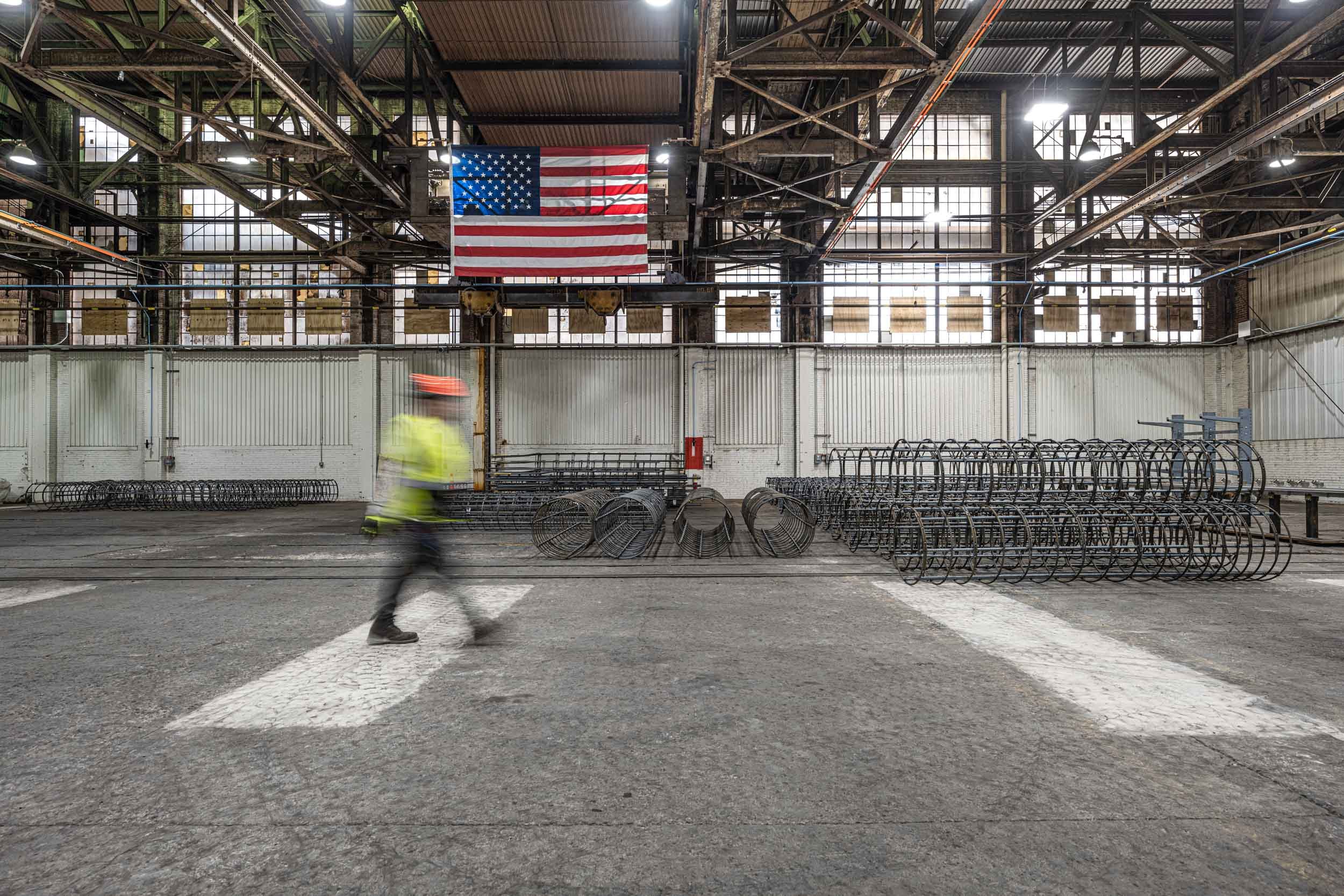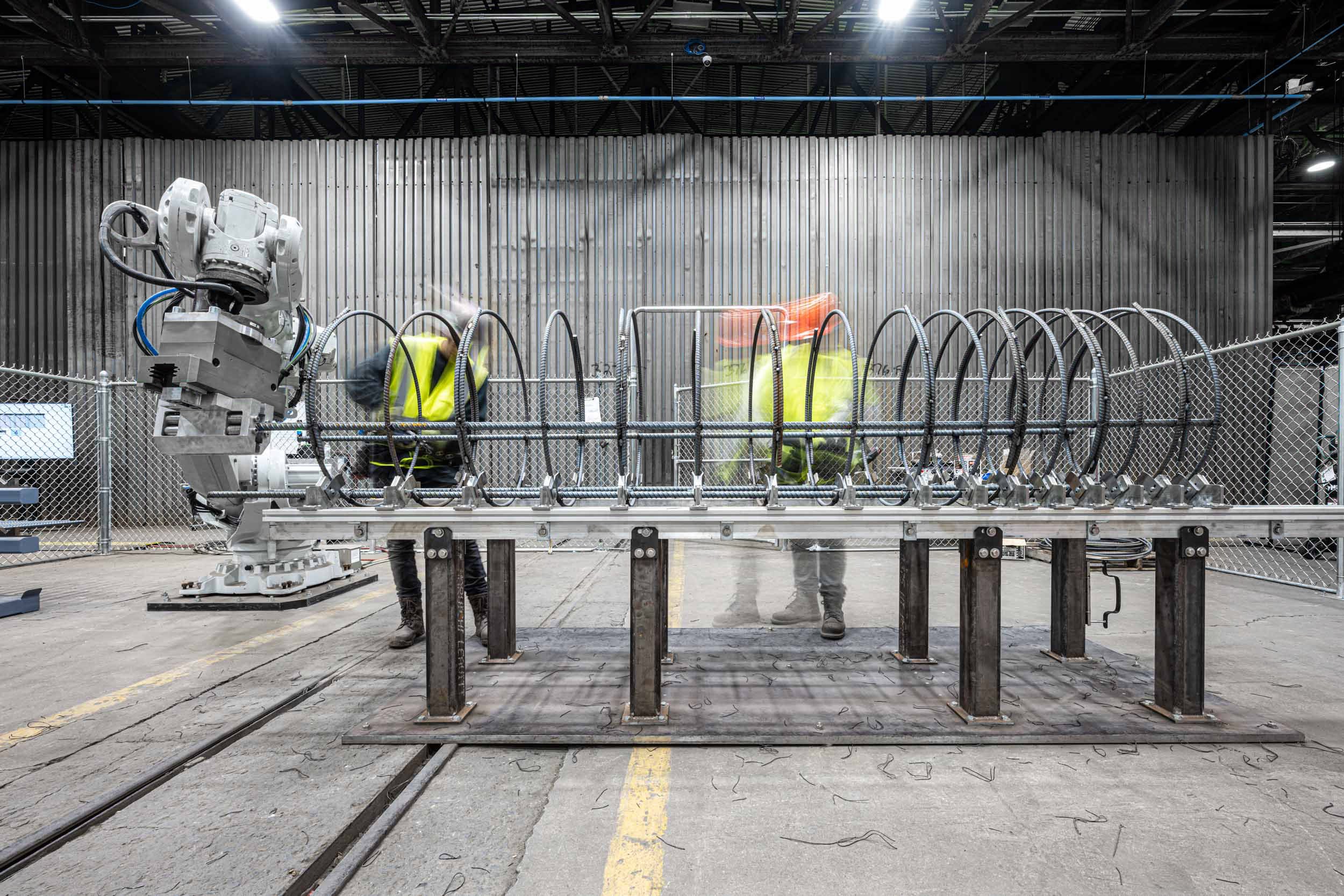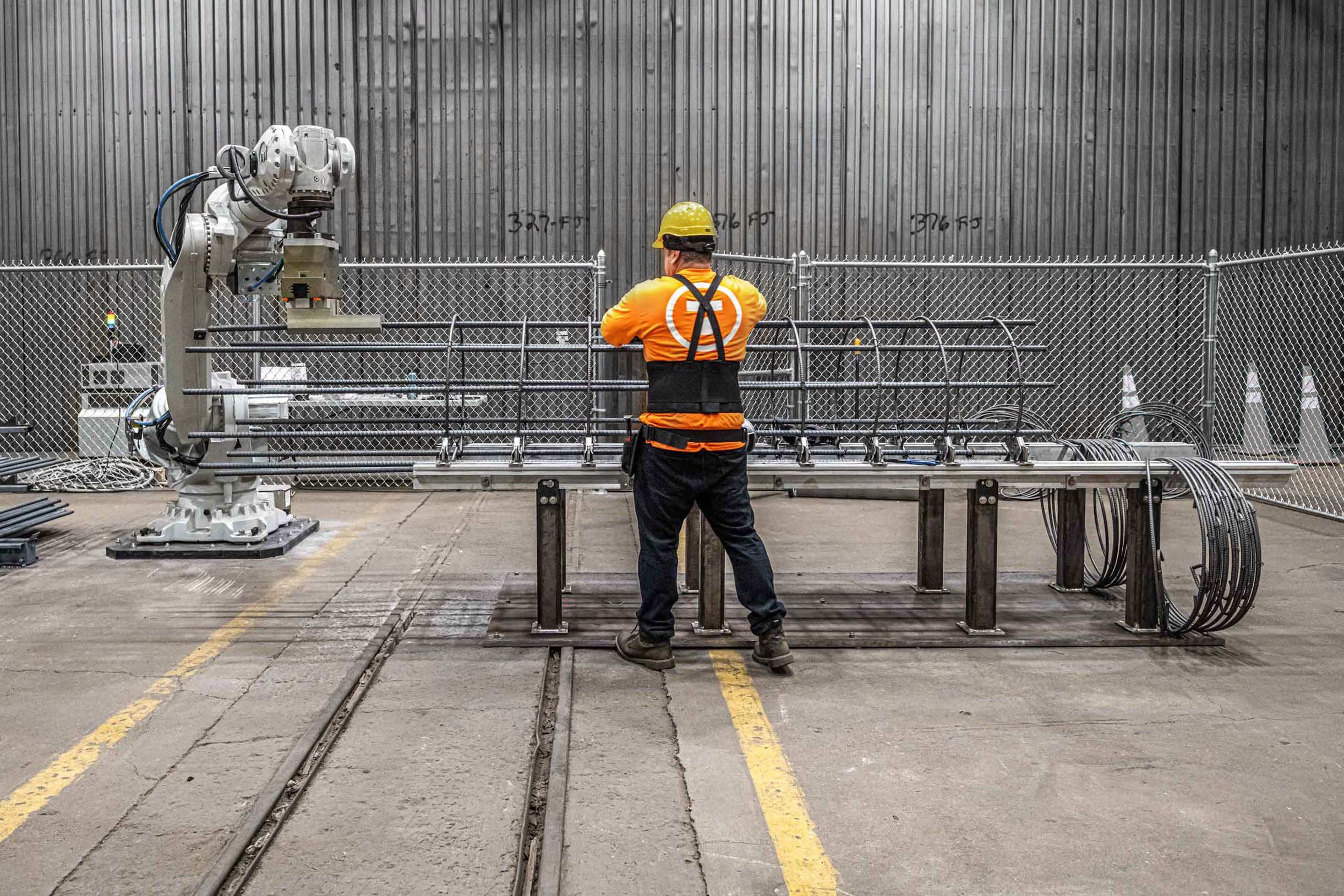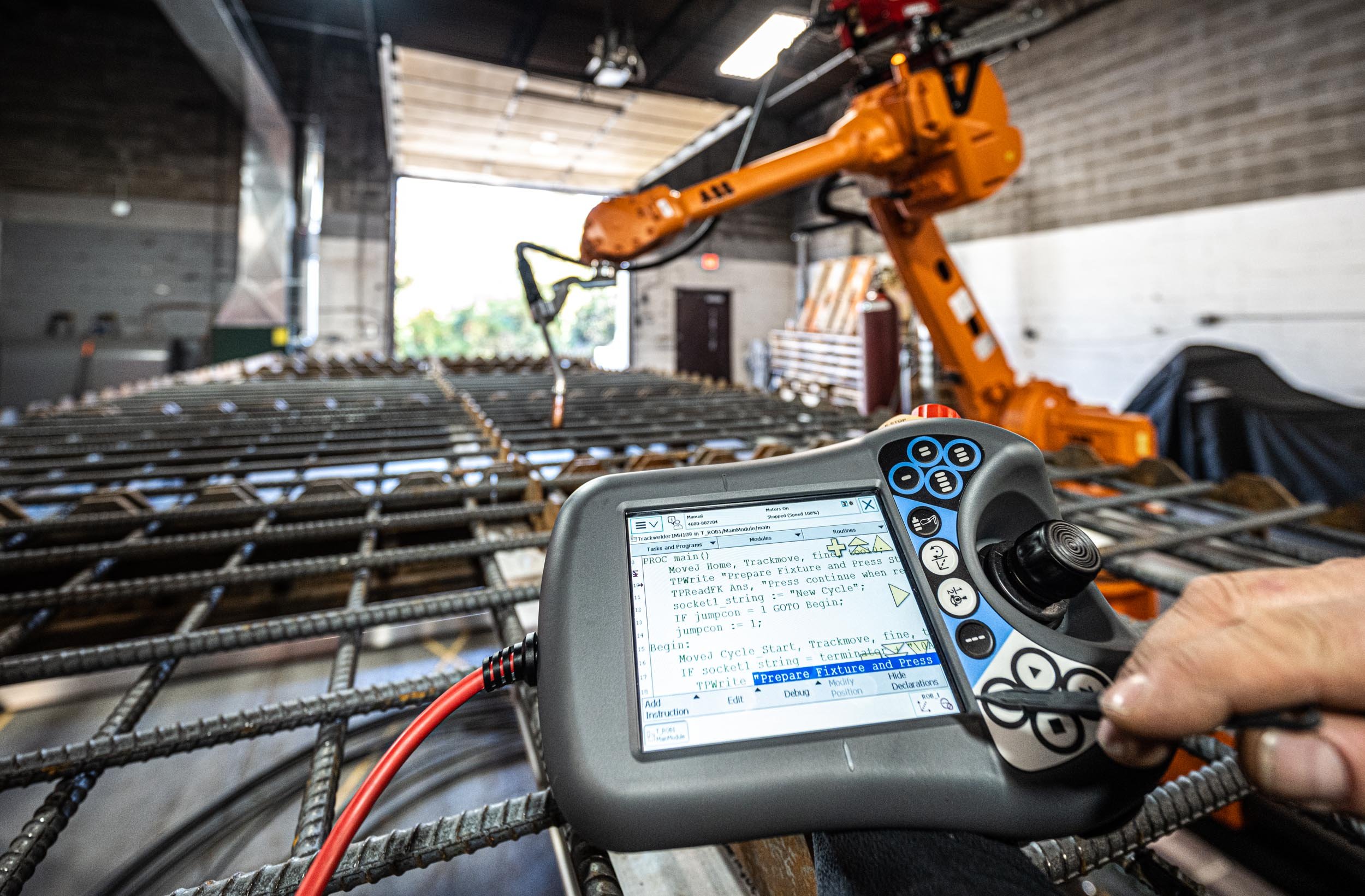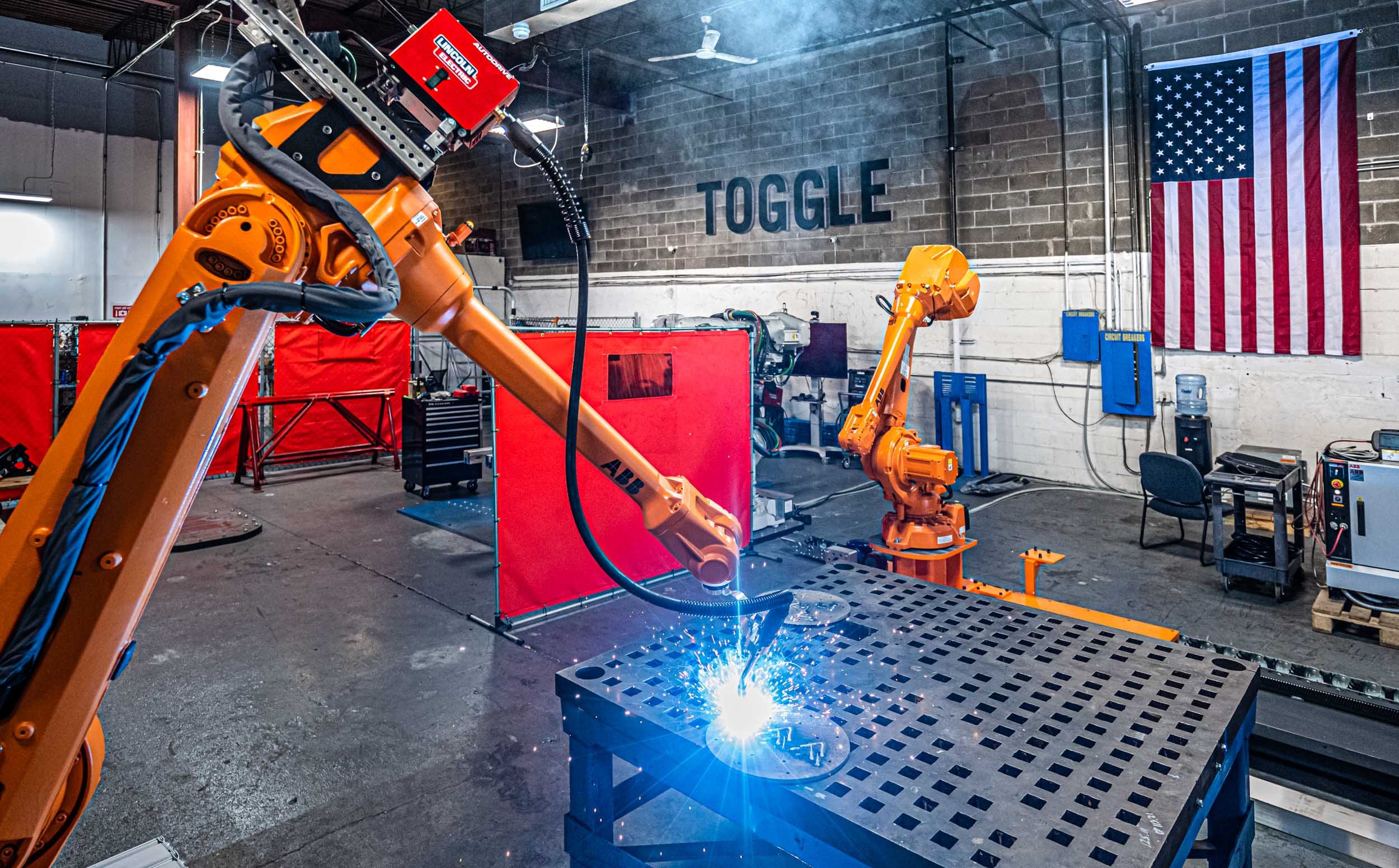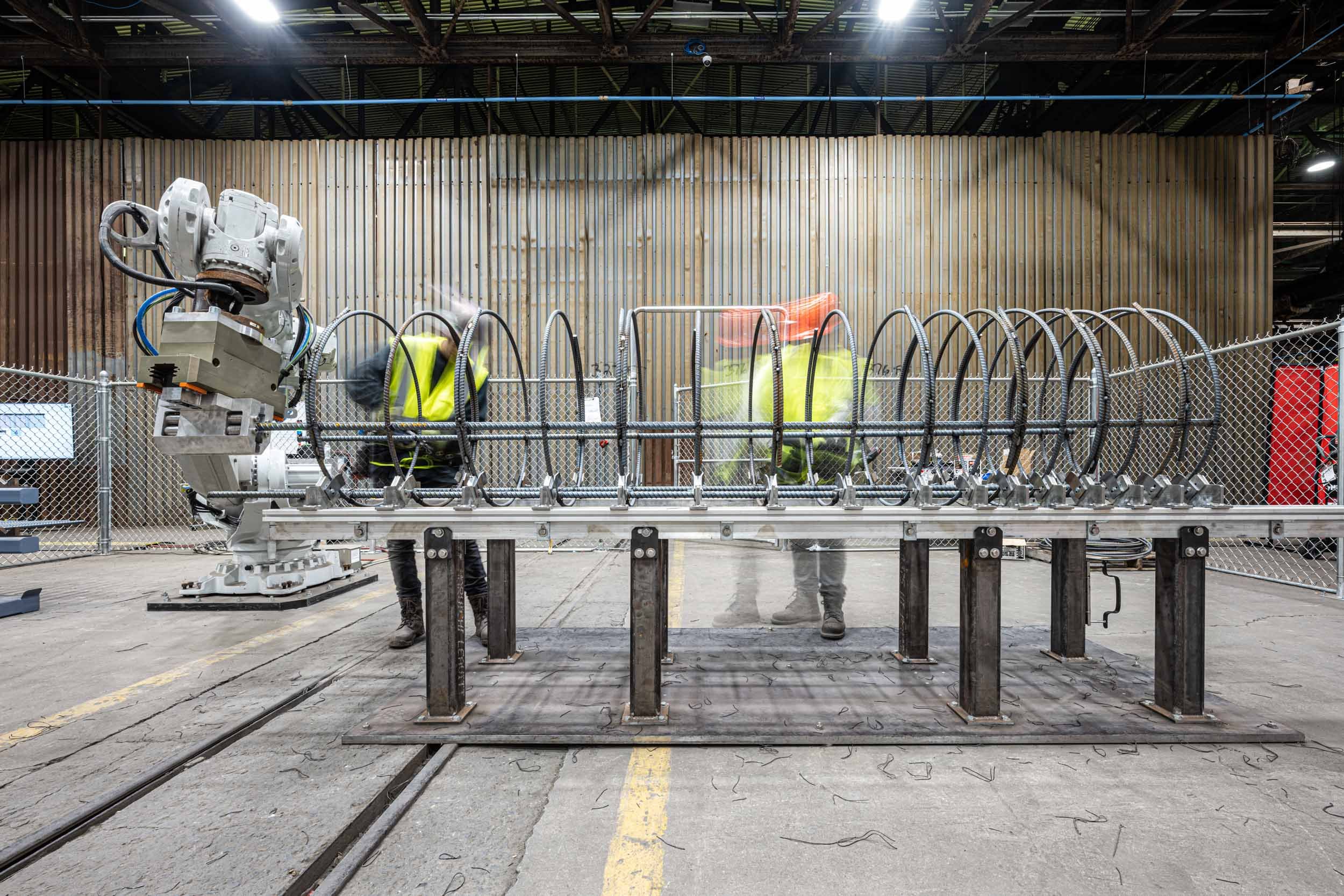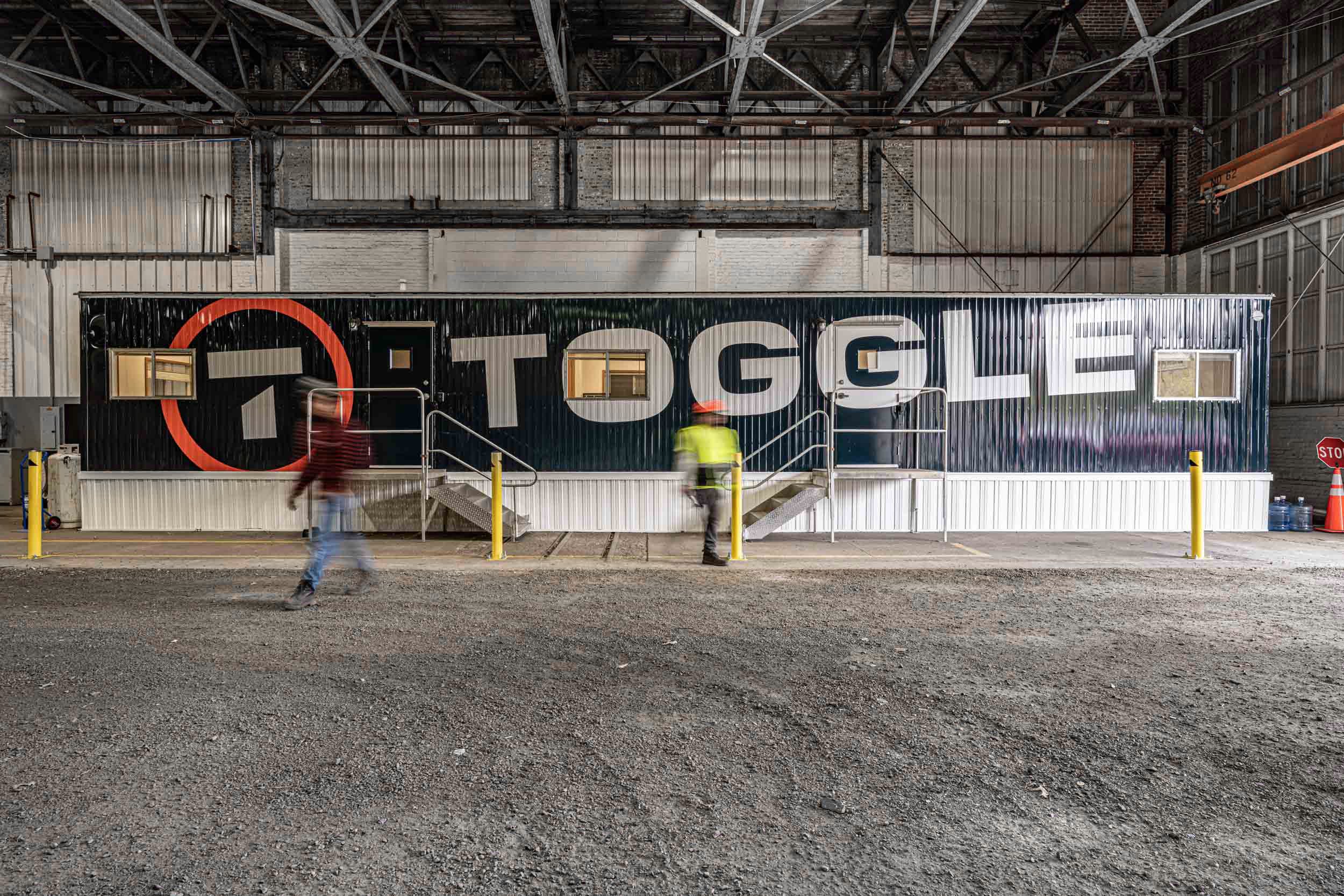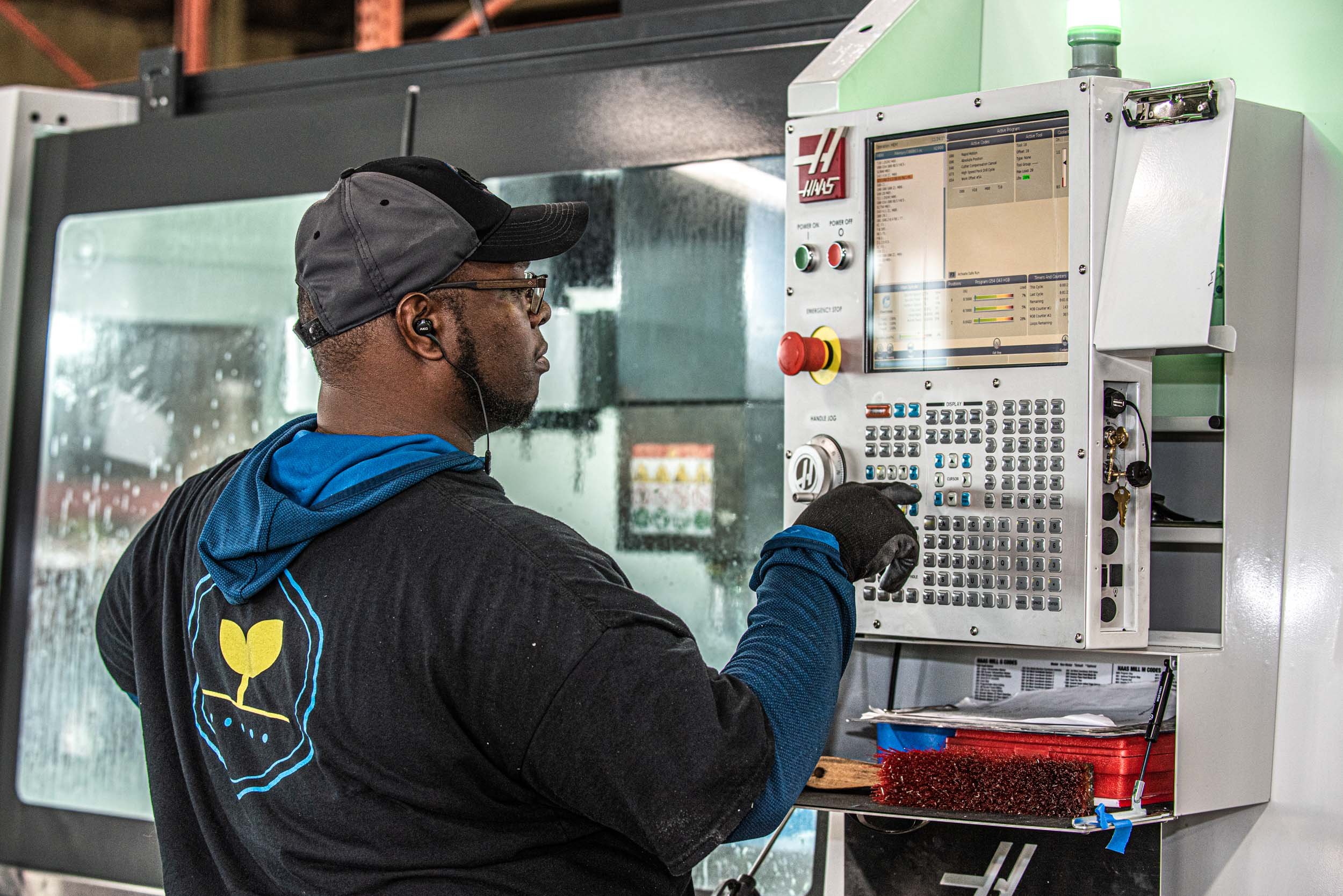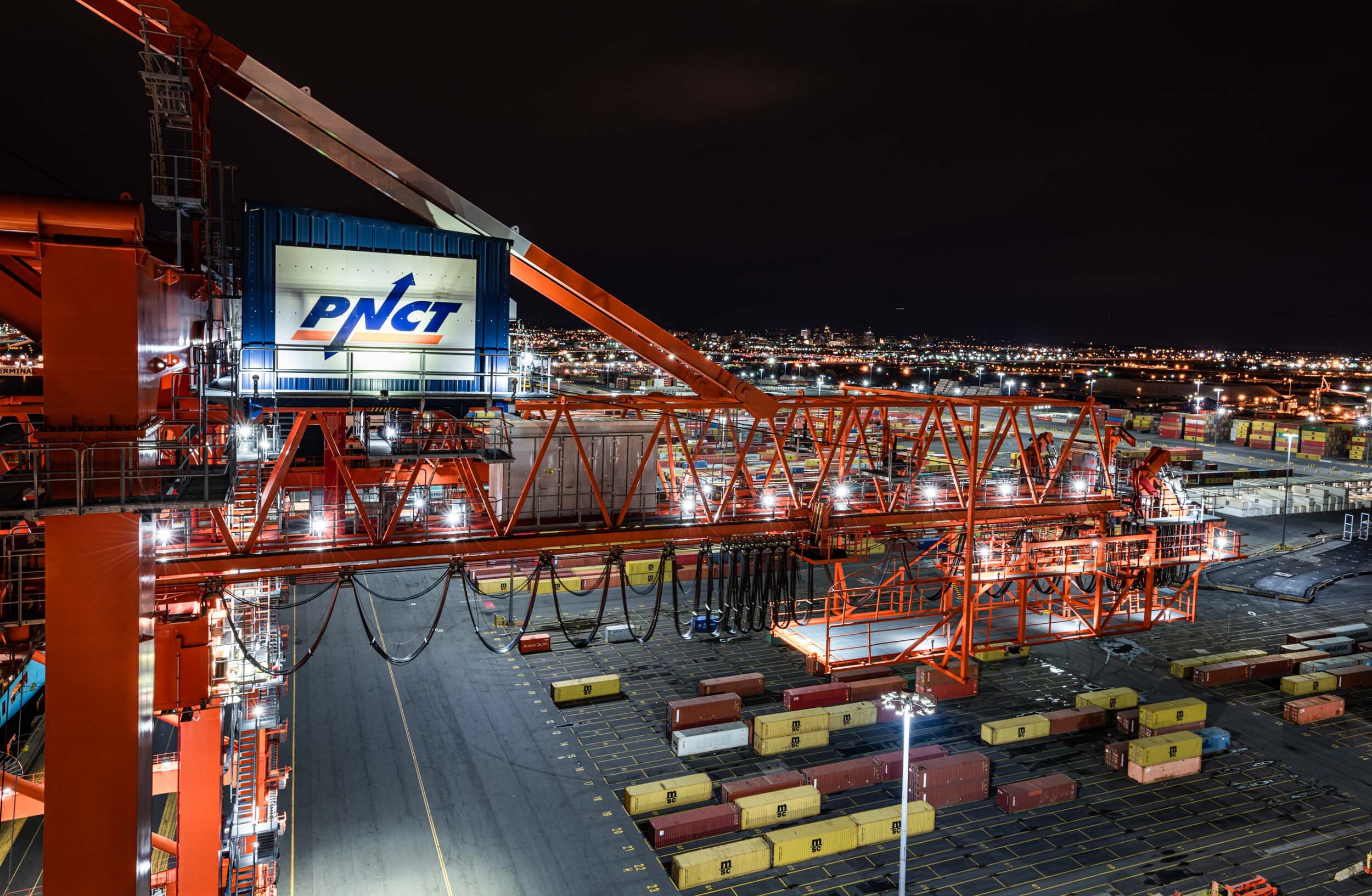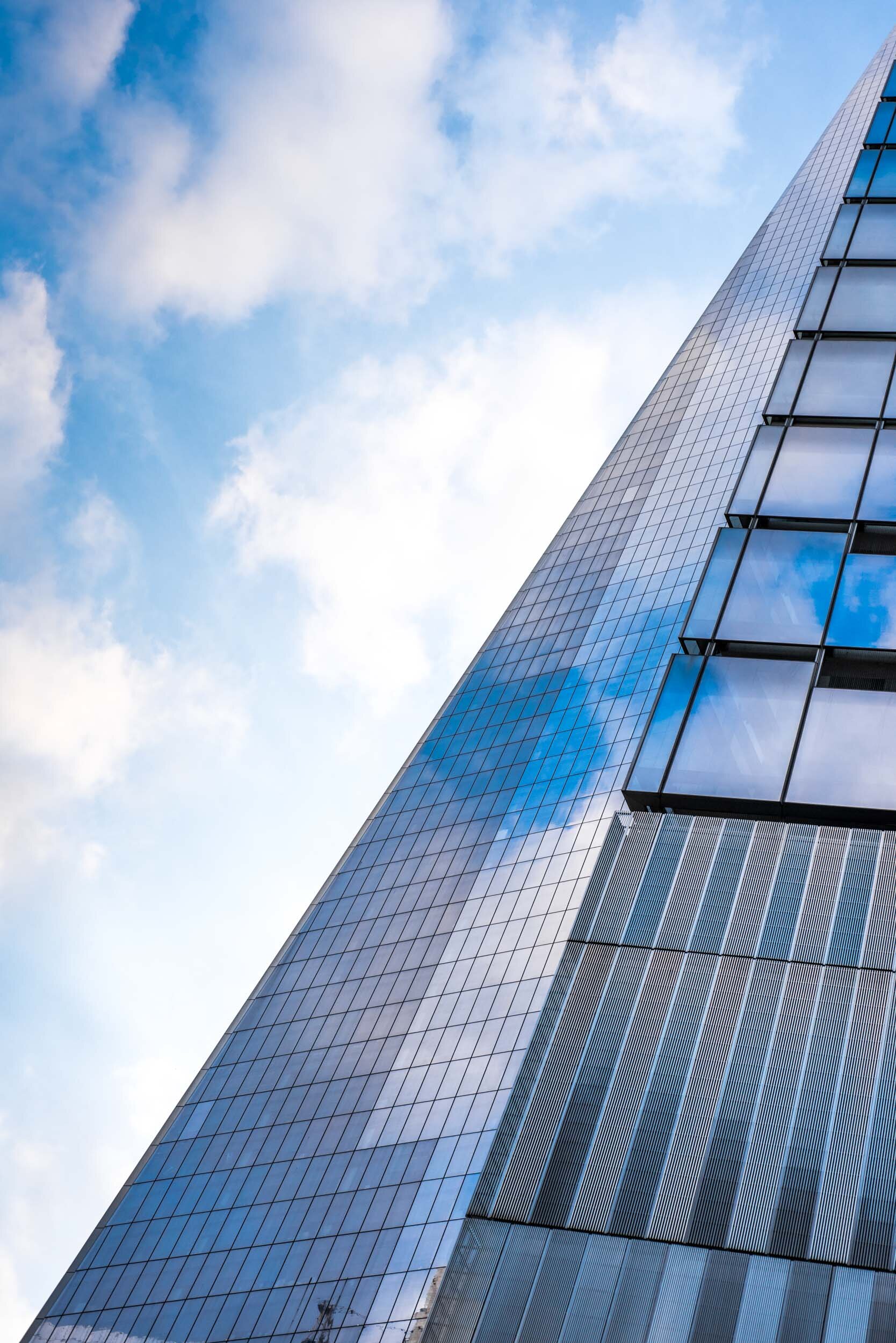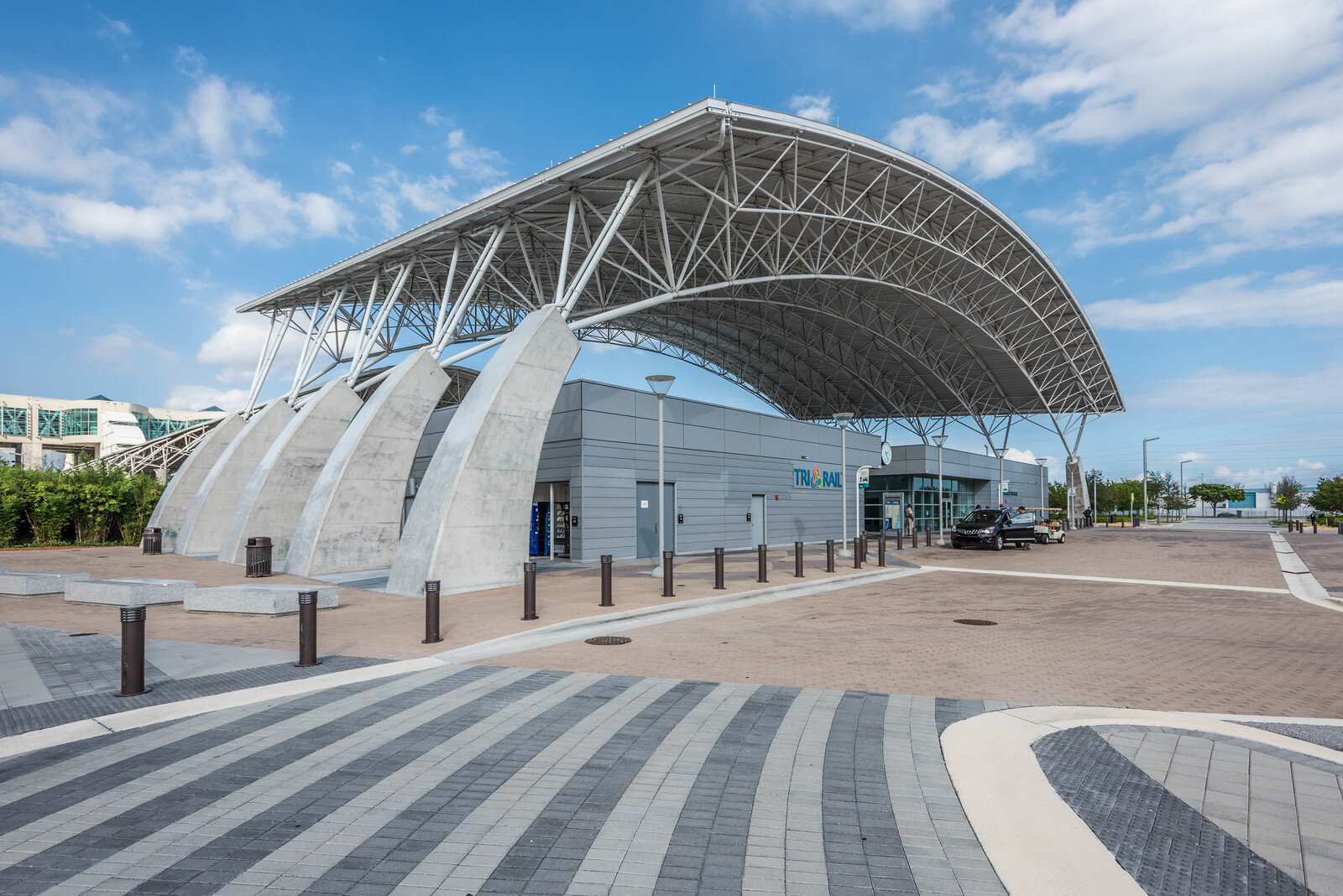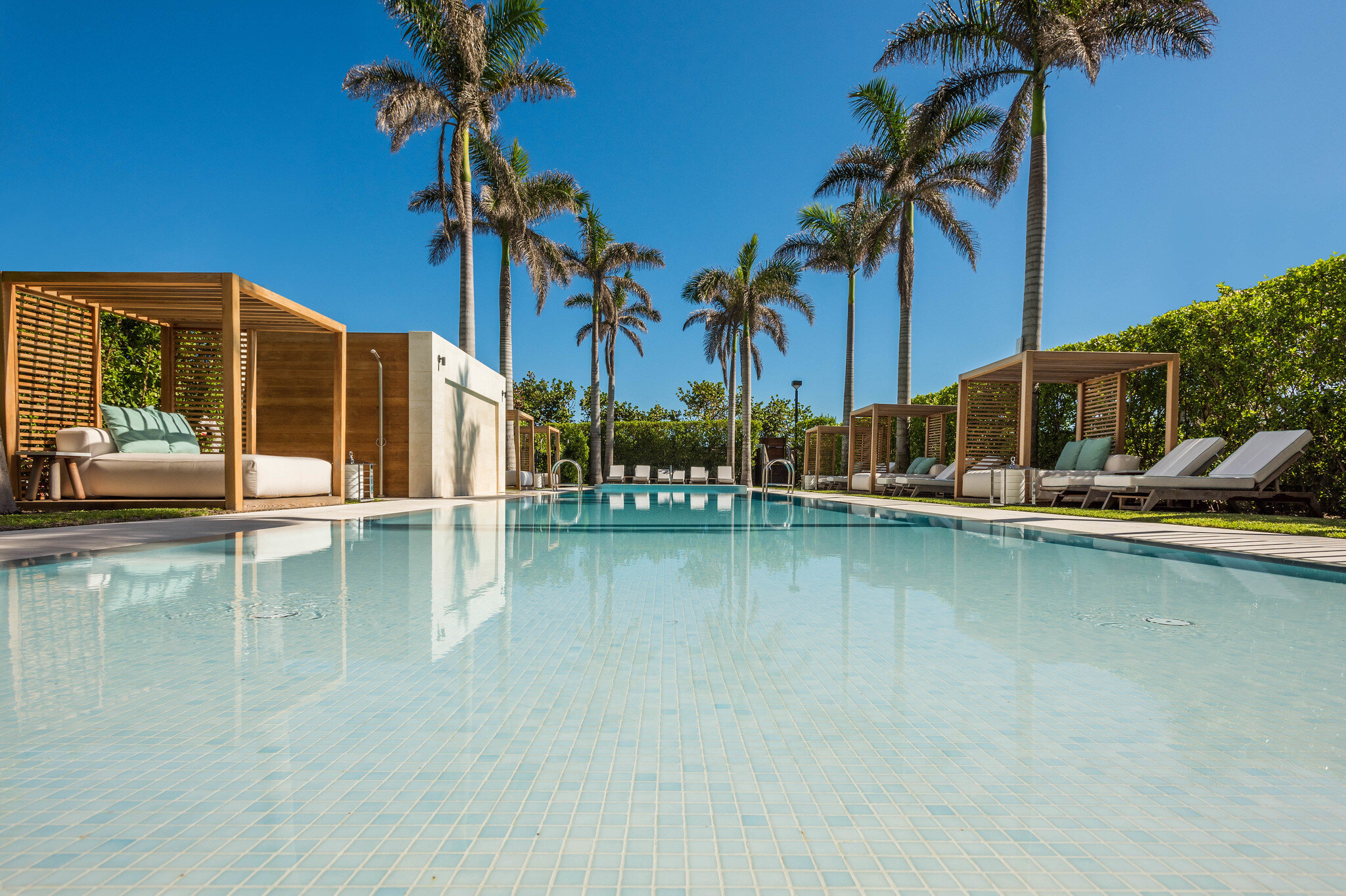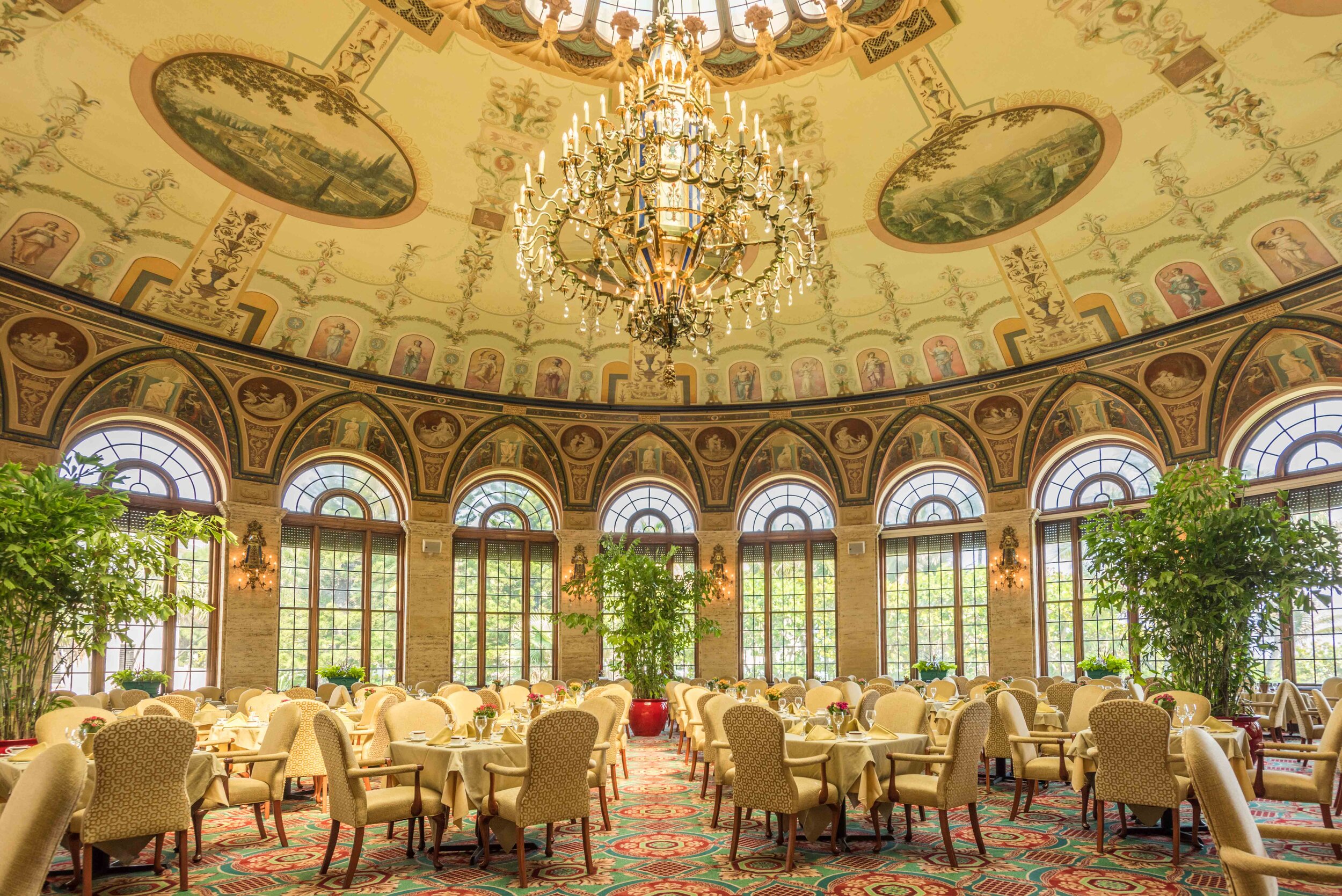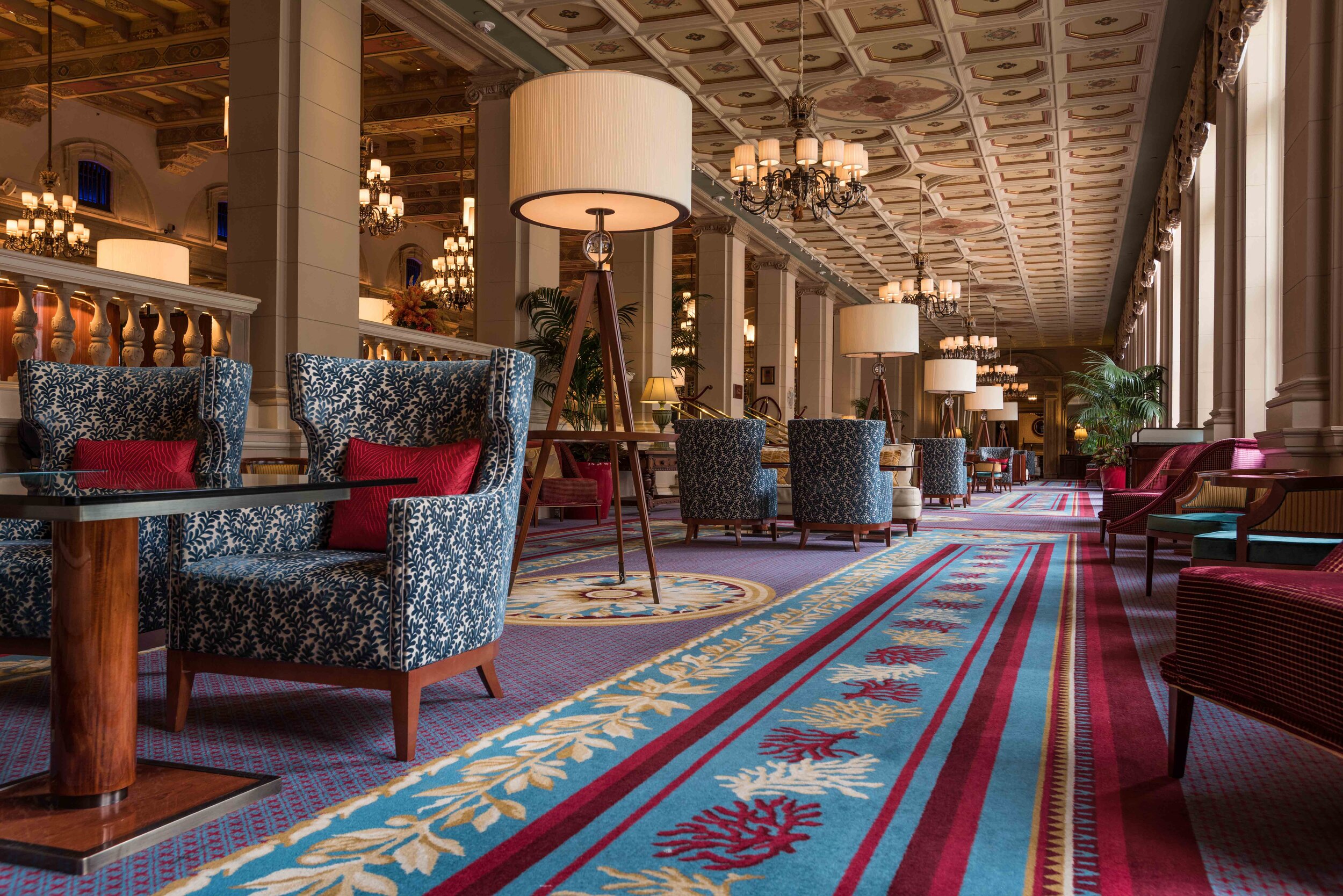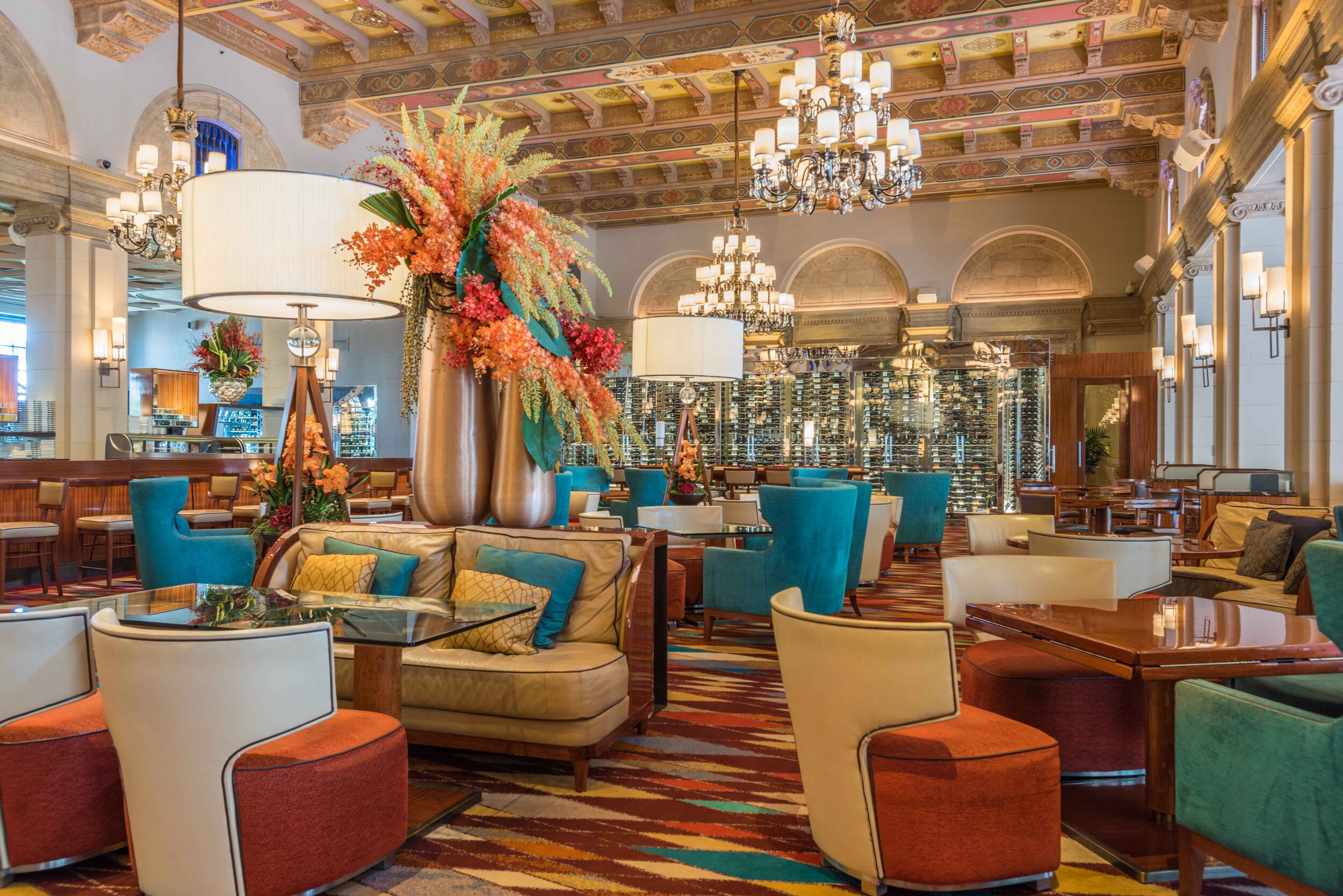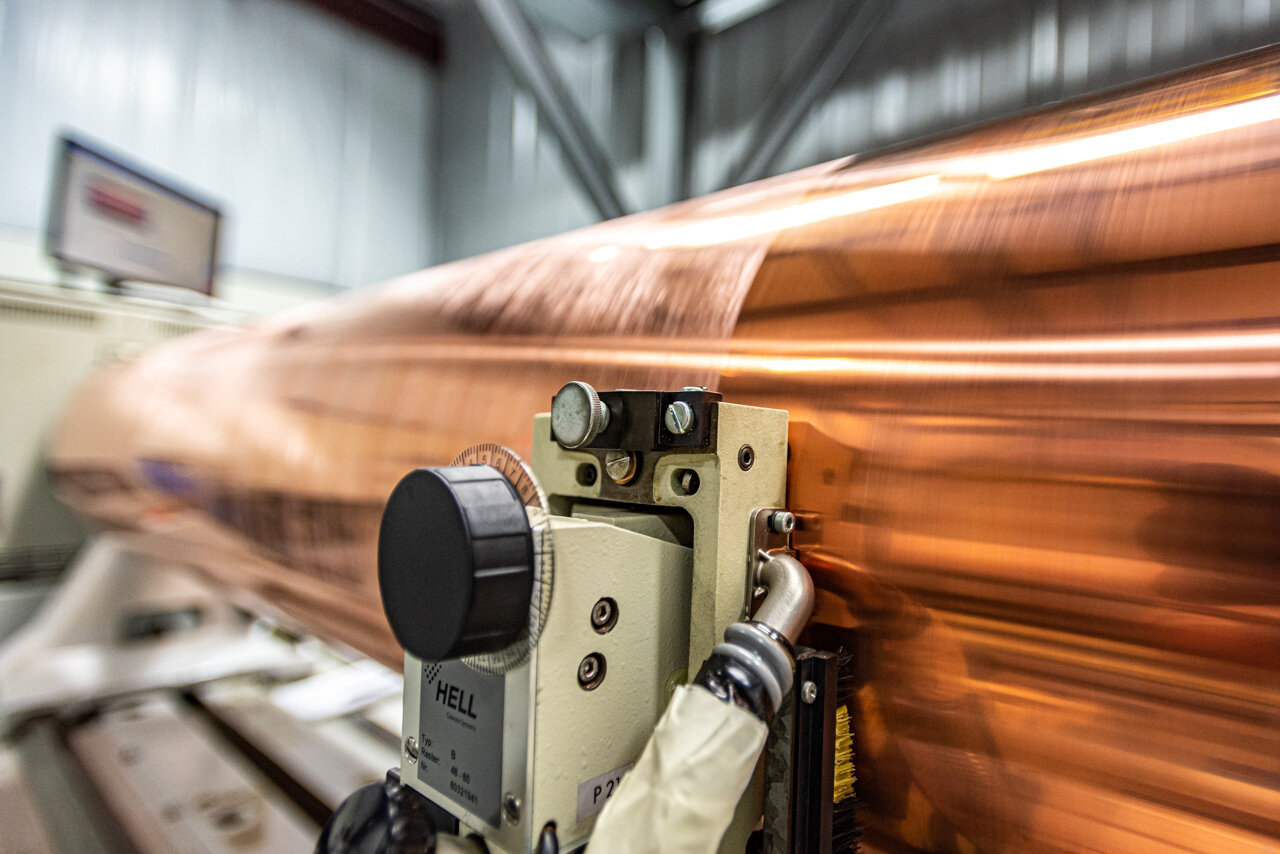Latest Industrial Photography Project in Batavia, IL
Discover our latest industrial photography project with Prince Industries in Batavia, IL, which captures their innovative approach to precision manufacturing. From state-of-the-art CNC machining to advanced metal fabrication, these visuals showcase how Prince Industries is driving excellence and shaping the future of the industry through craftsmanship and cutting-edge technology.
I am thrilled to unveil my latest industrial photography collaboration with Prince Industries, a leader in precision manufacturing renowned for its groundbreaking metal fabrication and CNC machining solutions. This project provided the opportunity to capture their state-of-the-art manufacturing facilities, showcasing the meticulous craftsmanship behind every product, from aerospace components to industrial equipment assemblies.
Prince Industries embodies a culture of excellence driven by precision, efficiency, and reliability. Their innovative approach to advancing technology and maintaining industry standards reflects their team’s dedication and collaborative spirit, ensuring every product exceeds customer expectations.
Beyond capturing images, this project offered a glimpse into a space where innovation meets perfection. Prince Industries isn’t merely manufacturing products; they are sculpting a legacy of quality and ingenuity that continues to define the forefront of the industry.
Join Prince Industries in their pursuit of precision and innovation at Prince Industries.
#IndustrialPhotography #PrecisionManufacturing #InnovationInIndustry
Latest Industrial Photography Project in Pottstown, PA
Dive into our latest Industrial Photography Project in Pottstown, PA, showcasing Toggle's groundbreaking approach to transforming urban infrastructure with advanced robotics, digital workflows, and sustainable practices. Witness how they're reshaping the construction industry, one pixel at a time.
Excited to unveil my latest project with Toggle, a visionary company revolutionizing cities and infrastructure through digital tools. As an industrial photographer, I captured their game-changing approach.
Toggle envisions a more sustainable industry, making construction fast, safe, and affordable. Their cutting-edge hardware and software automate pre-assembly for real value. With a focus on offsite assembly, digital workflows, and robotics, Toggle redefines urban infrastructure and energy projects. Balancing efficiency and collaboration, Toggle creates safer jobs for workers. I see a future where their approach drives construction. Join the transformation. #Toggle #ConstructionInnovation #IndustrialPhotography
3 Reasons to build a personalized image library
Studies show that impressions are made in the first seconds of the consumer encountering a brand. And studies also show that the first thing a potential customer clocks is visual material. Whether you have a complex, multi-tiered marketing plan for your business or are simply aiming to convey your brand consistently on the web and across other marketing materials, you’ll need to have images.
“No matter how much time you invest in choosing a robust platform, creating a sharp user flow, or establishing brand guidelines, all of it will have limited success – all of it – if your content doesn’t support your users and your business,” says creative director and marketing expert Hannah Green.
The easiest and least expensive option for your business is called an “image bank.” Built-in a day or over time, a brand-consistent image library can take a business from unremarkable to outstanding, grabbing that first impression and following up with strong and distinctive photographic content.
Here are three reasons a personal image bank is the only option that makes sense
1 Your Market Responds Most to Authentic Photography.
Today’s consumers have used the internet as a tool for most of their lives. If you’re using stock photography, expect your market to sense that right away. Populating your marketing materials and reports with those identifiably impersonal photographs will broadcast a dangerous message to your viewer, leaving them wondering if you are a legitimate and trustworthy business – after all, anyone can license stock images.
Stock photographs are largely vague in nature. Stock sites are populated by those kinds of images for their “versatility” – and therefore the higher likelihood that the content will be licensed by as many of their business customers as possible. Unfortunately, that means the photos you choose are likely to also have been chosen by scores of others, including your competition.
Consumers are 96% more likely to respond to personalized and brand-specific imagery. Authenticity affirms the impression that your business is trustworthy and that your workers and administrators are real people with genuine integrity. Familiarity leads to favorable impressions and it’s up to you to offer your customers a way to become acquainted with your company culture, core messages and brand visuals. Personalized photographic content is the only way to present your business as a unique and trustworthy choice.
This impersonal stock photo offers no brand information.
Here, commercial photographer Diego Cappella integrates brand visuals, company culture and a message of safety.
2 Image Banks Save Time and Money.
Searching for the “right” stock image for a specific context is highly time-consuming. Often, companies don’t allow much room for these quests – so other aspects of design and content suffer as this time vampire stretches on. Once you’ve found a stock photograph that seems to correspond, perhaps, to a general topic, you’re likely to spend even more time than cataloging that image and managing its place in your content inventory. After all, you will need to know when you need to renew your rights and have an ongoing task of doing so.
An image bank, on the other hand, is intentional. You will have your photographic library in order from the start by choosing your set-ups with intention. In other words, you won’t be combing through random shots to find a fit for your content but instead will have ensured the photograph is available because you provided for that specific need in advance. “Images need somewhere to live: not only for storage but as a resource you can call on again and again and continue to cultivate as your experience grows,” says Green.
Perhaps the most obvious reason to build an image bank is financial. Unlike stock photography, every photograph in your bank is free of licensing fees and other recurring costs. That means that you can build content that has staying power. At any time, you can draw on your personalized branded photographs without any concern for budget. You own your images. If you added up what you currently spend on licensing and usage rights, you’d probably find that a day or two of an on-site photo shoot will come in at a lower cost.
3 Image Banks Grow and Strengthen your Brand
Personalized commercial photography is a no-brainer if you place importance on your branding. Unlike stock photography, your image bank photographs support company messages, reflect branding aesthetics and increase brand recognition.
Think of it this way, if your materials are generic, what separates you from your competitors? How will they remember you? Even if you’ve taken great pains with a content strategy, if that sensibility is not an integral piece of your visual materials, you are, in essence, keeping it to yourself. The best commercial photographer will think about every aspect of your brand and integrate that into the images he creates. That first glance by your consumer – that initial visual impression – will reflect your distinct brand and company.
Here, commercial photographer Diego Cappella captures a distinctive brand in an employee portrait.
Says Green, “Ultimately, having a cohesive image library will streamline content management, support visual design, and increase brand recognition.” Imagine gaining all of those benefits and actually saving money in the process. Building an image bank is the obvious choice.
To sum up, here are the three reasons you should build a photographic image bank:
Personalized images distinguish your company from others and strengthen your brand.
Image Libraries offer lower costs and saved time.
Custom company photographs broadcast your company culture, core messaging, and brand aesthetics.
Commercial and industrial photographer Diego Cappella has been helping companies build on their brands with authentic and consistent visual content for over a decade. Start with a one-day shoot on-site at your business or build your bank over time.
Call today to schedule an image bank photography shoot!
How to prepare for an industrial photoshoot:
How to prepare for an industrial photoshoot
6 Key Steps
You’ve determined that you need a photographer and have engaged the premier industrial and commercial photographer, Diego Cappella (good decision). Now what?
Some preparation on your part will go a long way towards getting the best possible results. Fortunately, we’ve identified the key elements of preparing for a photo shoot at your commercial or industrial business.
Step One:
Define your Purpose
PAC Stainless Steel of Houston, Texas needed to visually populate a website.
Why have you hired a photographer? Make a list of the materials you intend to use photos for. Some examples include websites, brochures, and advertising materials. If you’re building a social media presence or otherwise require a steady feed of new photos over time, think about collaborating with Diego to build an “image bank” for current and future applications.
Step Two:
Make a Shot List
Sawing and Shearing, an industrial manufacturer in Chicago, asked to photograph all the machinery for their website
Look over your list of materials and start generating a list of must-have photographs. Focus on what sort of photos you would use in each place. For instance, if this is all material for a website, take a look at the various sections where photographs may fit in and imagine some ways to reflect that section’s purpose.
Photos may fit differently in a catalog than in a specific advertisement layout. Include specific aspect ratios. For instance, many home pages will require a landscape shot to span the width of the page while allowing for text either below or above the photograph. This forethought allows the industrial photographer to maintain a cohesive composition rather than having to crop an existing shot in a way that could compromise its cohesion.
Step Three
Identify Locations
Here, industrial photographer Diego Cappella made employee portraits visually compelling by shooting workers in their element
Now consider your industrial environment and process. Come up with a list of key locations. Most industrial companies would want to include an assembly line. But what other spots might you like to highlight and what places may offer special visual appeal? Using your shot list, make sure you have chosen a place or included locations where those photos may be fulfilled. Remember, you can get as creative as you like. For instance, you might want to set employee portraits among machinery rather than simply a neutral background.
Diego Cappella chose this industrial location at Tropical to highlight company branding.
Think about where your brand logo is visible, and be sure to include those places in your location list.
Don’t forget to choose a launching spot for us. This should be out of the way of operations and secure enough to leave photo equipment unattended.
Step Four:
Communicate Your Brand
This industrial company wanted to highlight innovation. Industrial photographer Diego Cappella captured a worker using the latest technology in manufacturing.
Remember that photographs are not all literal. Think about what underlying themes and messages are integral parts of your brand. For instance, you may make a point of conveying dependability, friendliness, or expertise. Make a list of these core messages and brand colors to share with Diego Capella before the commercial or industrial photo shoot.
You probably have a logo or website that includes your company's colors and design aesthetics. If not, take a moment to browse through the choices that form different looks and feelings. A good resource for color schemes, styles, and moods can be found on design sites or by looking at the choices made by businesses similar to your own.
Step Five:Spread the Word at Work
Tri-Rail chose to have workers wear their uniforms for employee portraits. Note that the color also corresponds with their brand colors.
Don’t take your workers by surprise. Without adequate preparation, an industrial photographer has a harder time maintaining safety and capturing spontaneity. Let your employees know that a photographer will be on-site on that specific date. If workers don’t want to be photographed, have them wear a red shirt or, if your uniform or key colors include red, choose a contrasting color and let us know what that is. If you have uniforms or branded clothing, have your staff wear that – it will highlight your brand even in areas that may be common backgrounds for many companies, such as an assembly line or machinery storage area.
A company asks workers to wear a brand color to work on the day of their shoot.
If your employees wear their own clothes, look back at your brand element list and choose a color that corresponds with your color scheme and ask your workers to include that in their dress choices for the day of the shoot. Ask also that they are conscientious about their appearance – they should avoid old or worn clothing and present themselves at their visual best.
Step Six: Clear the Clutter and Stage Locations
Before their industrial photography shoot, LandSouth Construction made sure safety equipment looked new and clean and included building plans in one of their locations.
Take a look at your list of locations. Make sure you or your employees remove trash and personal items from those spots. This will both help the industrial shoot to run smoothly and also ensure that the photographer can maintain a safe distance from hazardous work or machinery.
Consider using your phone to take quick snaps of those locations and think of how they will ideally look on the day of the shoot. If possible, wipe down greasy machinery and clean the areas thoroughly, even if your protocol does not require this on a regular basis. Consider ways to stage the locations with branded products or company and branding style.
For quick reference, here’s a list of the six key things to do in preparation for an industrial photoshoot.
1) Make a list of the different marketing and web materials for which you need photographs.
2) Make a list of the must-have shots for each application, including any necessary correlating aspect ratios.
3) Make a list of locations or backgrounds you think will best suit your needs. Choose a secure staging area for us.
4) Make a list of your core brand messages, style, and colors so that an industrial photographer can represent those things visually.
5) Let your employees know about the shoot in advance. Ask those who do not wish to be photographed to wear a red shirt and the others to either wear their uniform or good clothes with your core color.
6) Remove trash and personal items from your locations. Clean equipment and consider adding objects that enhance your brand message.
And don’t forget to have fun because that, too, is a great way to put your best foot forward!
Four Angles on Industrial Photography
Four Angles on Industrial Photography
The goal of any successful Industrial photography series is to convey the brand attributes the company wishes to broadcast to its clients. Oftentimes there is more than just one. The attributes could be anything from the weighty theme of corporate social responsibility to something as simple as conveying care and concern for clients and customers. In industrial photography, those themes often revolve around safety, reliability of the product and strict adherence to best practices. In consultation with clients, a professional industrial photographer will offer a variety of strategies to accomplish clients’ goals. We’ll take a look at some typical requests from clients and how industrial photographer Diego Cappella was able to meet those needs in visual form.
Angle One:
The in-situ Portraits
Justrite Safety Group, Chicago, Illinois
Most industrial photography will have some worker portraits by default, whether the clients specifically require that or not. These sorts of portraits are very different than the more common commercial and corporate photography or headshots because they play heavily upon the environment in which the subject resides. As an aspect of photography in general, this sort of context-focused portraiture is called in-situ photography (in-situ is literally defined as “in the original space”). The subject is shown in a rich surrounding which offers an opportunity to highlight the given message. For instance, to convey a subject’s intelligence, a photographer may capture the image in situ, against a background of the subject’s study where books line the shelves behind him.
Industrial photographer Diego Cappella has fulfilled many assignments for Justrite, a safety equipment manufacturer based in Chicago, Illinois. For Justrite – a leader in its industry with a long and rich history in Chicago – marketing relies heavily on industrial photography. Justrite manufactures a wide range of workplace safety products and wanted to reinforce the quality of their products by conveying the company as both protective and trustworthy. “I have to figure out how to humanize things like manufacturing and construction – places where there are a lot of machines and steel, which are cold,” says Cappella, “in Chicago, the industrial photography needed to show the manufacturing process as part of a safe environment with people and products consumers would see as high-quality and reliable.” Cappella captured the culture and values of the company by depicting the everyday people behind the products as they interacted in the environment and with the products they are selling. A warm, inviting portrait, for instance, conveys an approachable worker, someone who has a genuine interest in keeping people safe. A photograph of a worker engaged in the process of production broadcasts a sense of skill and a conscientious approach. Creating these individuals, personal connections creates a halo effect for the products these workers are invested in creating.
Central to industrial photography is the consideration of a wealth of factors. In this case, Cappella had to determine how best to marry the characteristics of individuals as they pertained to the themes inherent in strengthening the Justrite brand. There are a variety of styles and approaches available to a commercial photographer, and a good industrial photographer will have all of them at their disposal. A well-crafted industrial worker portrait can only be created with careful attention to the details that serve to promote the brand. Below are some of the myriad factors considered by an industrial photographer.
Interaction with the environment
This is central to any worker portrait. Is the team member comfortable in their environment? If they are performing a task, do they appear confident, at ease, and in control? Do they emanate a feeling of pride in their work?
Style of dress
Does the organization have uniforms or a dress code? Should the workers be photographed in street clothes or their required work clothes? You might imagine if your portraits are trying to convey trust in say, a large medical firm or a security company, then that white lab coat or blue shirt with a badge is exactly the way to establish professionalism and authority. If your organization is built on production, teams of people working on building and assembling products, then their work overalls are a good choice, or even everyday street clothes as this will help the client understand these are real people - just like you - and you will associate with them as a friend or neighbor. Always consider clothing that features the name of the manufacturer and/or a logo to best combine the message of the photograph with the company brand.
Lighting
A common option for portraits is depicting a warm, soft light (well enough lit to clearly show the elements being highlighted). This not only provides a flattering image of the employee but also conveys a sense of familiarity and connection. If the focus is on the difficult work that these folks do to make certain the products they are providing meet the highest standards, then turn to more dramatic lighting - think ‘hero shots.’
Colors
The psychology of color cannot be overlooked here, and never is by a good industrial photographer. Red is used to provoke strong emotions like power and passion. This might seem like a good idea, but red is also one of the most contradictory colors, allowing more opposing emotional associations than other colors. Greens and blues, on the other hand, can be associated with calm and peaceful emotions. The absence of color – for example, a well-lit, clean white background will convey attention to detail and a sanitary feel. The right use of color will go a long way in determining how images are ‘read’ by clients.
Environmental contrast
Environmental contrast in industrial photography refers to the way the industrial background relates to the people who work there. A professional industrial photographer will be able to convey a sense of the richness of community in the work setting. A group shot of employees examining blueprints on a worksite, or gathered around a forklift on break, laughing and enjoying each other’s company - clearly establishes the idea that each individual employee is as at home in their work as in their community.
Here Cappella chooses a specific worker to meet client goals; this is an older woman, a prompt that brings a maternal aspect to the portrait and that, in turn, conveys a sense of protection.
Cappella captures a worker in a state of extreme focus, performing his job in a conscientious fashion that inspires trust in the company and products. A clear, bright light broadcasts value placed on the work environment, which translates to the same value placed on the customer’s needs.
This worker, depicted in precautionary wardrobe, conveys Justrite’s attention to safety which adds to a shared purpose of protection between the consumer of protective products and the producer.
An expert industrial photographer leverages a variety of techniques and approaches to successfully telegraph brand attributes through still images. As you can see in the work of industrial photographer Diego Cappella, the styles and approaches used to convey brand identity are varied and should be carefully chosen. A good commercial photographer will have a variety of these angles at his or her disposal. But like a rock guitarist with a repertoire of riffs, no one chord will be appropriate for every song. It takes an expert eye and an aesthetic sensibility to choose the best approach to meet the needs of the client. Execution and attention to detail will distinguish the most successful industrial photography, as seen here in the work of Diego Cappella.
Angle Two: Focus on Machinery
Sawing and Shearing Services, Chicago
Industrial photographers encounter machinery in virtually every industrial setting. In fact, machinery is ubiquitous in almost all of the photography required for manufacturing companies. Even employee portraits rely heavily on machinery as backgrounds that establish clear contextual information and expertise in a given area. More often than not, photographing machinery is a tricky business. How does an industrial photographer depict a fixed object as dynamic and productive? How can one present machinery that may be a bit worse for the wear, covered with grease, or otherwise visually challenging in an interesting, compelling, and visually pleasing way?
Such was the challenge for industrial photographer Diego Cappella at Chicago’s Sawing and Shearing Services. Sawing and Shearing Services is a family-owned industrial steel fabrication company with a 30-year history in Chicago. Marketing messages center on this extensive experience, superior customer service and skilled workers. More technically, what makes the company stand out among its competitors is the extensive selection of machinery. With a variety of equipment, Sawing and Shearing is able to fabricate a wide variety of steel products. Industrial photographer Diego Cappella describes this Chicago assignment as “challenging because the machinery was worn looking and much of it was monochromatic.”
To address these challenges, an industrial photographer must be both thoughtful and creative. Factory machinery tends to be greasy and gray, so a straight shot won’t suffice to meet the client’s marketing needs – in this case, to document the different methods of fabrication while maintaining an advertisement-worthy aesthetic. The best industrial photographers will use a selection of skills to meet client standards.
Angle
Perhaps the most effective way to add interest to a stable object is by choosing the right angle. In the case of machinery, the photographer should establish what to highlight and what to downplay. An angle that places a positive detail of the machinery in the forefront and distances the indications of wear or other less positive aspects can work wonders for an older or dirty piece of equipment.
Here Cappella places a stylized logo and knobs in the foreground, bringing the eye to an appealing focal point and distancing the monochromatic aspects of the machinery.
Lighting
Lighting large areas can be challenging and time-consuming. In an industrial setting, elaborate lighting set-ups are almost impossible without completely disrupting operations and causing safety hazards. Fortunately, factories utilize many forms of illumination, from natural light to extensive fluorescent installations. The best industrial photographers will take advantage of preexisting sources and identify what and how the light affects the look of machinery. Lower light may disguise excessive grease; bright, reflective light can accentuate metallic surfaces and lend a sense of newness.
Here industrial photographer Diego Cappella takes advantage of light from the machinery itself. The bright sparks illuminate the straight edges of the equipment, but its locality serves to downplay grease and grime.
Color
In the context of a factory or other industrial setting, one is likely to encounter a sea of drab colors. The ability to pull the bright color out of that context is particularly valuable when photographing machinery and tools. We all know that bright colors draw the eye but what we may not have seen is the advantage that offers the industrial photographer. Because machinery is most often some shade of gray, black, or brown, color’s stand-out qualities can serve to downplay the overall dullness of the equipment. A good industrial photographer will offset what is visually uninteresting with a color or colors found in the factory itself.
Here Cappella captures the green and yellow of the machinery and highlights the yellow quality of the natural light from factory windows. Our eye is drawn to the bright impressions rather than the grays that surround them.
As with all good industrial photography, shooting machinery requires some of the techniques that all photographers are familiar with. An expert use of an angle can place the focus exactly where you want it. Lighting is always tricky in industrial settings but also offers unique opportunities to draw the eye to your focal point and away from what you want to downplay.
The right color highlights can create a balanced and compelling impression and leave monochromatic elements to serve as frames or boundaries.
Angle Three: Color Story
PAC Stainless - Houston
When one conjures up a vision of an industrial setting, color is probably not the first thing that strikes the imagination. In fact, industrial photographers struggle with finding visual interest in such environments, which are often gray and monochromatic. A common first assumption is that the more drabber the environment, the more color one would have to introduce to draw visual interest. But good industrial photographers know that splashes of color against such backgrounds can have a significant impact. In fact, color stands out more against a monochromatic canvas. That means that colors need to be carefully considered and introduced as part of what’s called a “color story.” The color story is a common term in both film and fashion and encompasses the idea that colors can evoke certain emotions or information if used consistently, purposefully, and in a seemingly organic way. The use of the right color story can leave the viewer feeling serious or jovial, activated or relaxed.
Industrial photographer Diego Cappella implemented a color story for his shoot at PAC Stainless in Houston, Texas. PAC Stainless began as a small concern in 1976 and built its way to the top of tubular stainless-steel manufacturing in the United States. Today PAC Stainless has factories in Houston, Seattle, Atlanta and Louisiana. Cappella, like any of the best industrial photographers, considered multiple factors in determining the best color story.
Organic Color
A great place to begin the industrial photography color story is within the factory itself. The best industrial photographer will study his surroundings to gain a sense of what colors are most common in a factory and consider which are central to the overall visual impression of the manufacturing environment. While it might be tempting to invent a color story that works in a broad sense (i.e., yellow and blue look good against industrial settings), the organic colors, even if found in only small details, are the colors that should inform the story from the very beginning.
Industrial photographer Diego Cappella finds his color story inside the factory walls. This photograph of stored steel tubing inspires Cappella and serves to set up the color story he ultimately chooses.
Branding
As with all industrial photography, the client and the clients’ aesthetics have to take a major role in determining any photographs that fall into the commercial category. PAC Stainless uses blue and gray primarily in their branding and materials are large catalogs of various products. This branding reflects the product, and the lack of color is consistent with stainless steel tubing. For Cappella, that meant he had to find a color story that both included the company brand and also set it apart with the use of a bright palette. Referring to the organic colors within the building led to the choice of yellow. Yellow provides a contrast to the blue used in branding.
Industrial photographer Diego Cappella sets the brand’s blue up against a subtle background of yellows.
Mood
At Houston’s PAC Stainless, industrial photographer Diego Cappella found that he needed to lighten up the cold colors of steel, machinery, and equipment. Different colors are said to reflect different moods, and certainly, grays and blacks tend to denote sadness or a lack of life. Though reactions vary, the general wisdom is the following:
Yellow: optimism
Orange: friendly
Blue: trust
Purple: creativity
Red: excitement
Green: peace
PAC’s use of blue may instill trust in their target market. The integrity of the products is an incredibly important message for the company, indicating that quality is as important as the bottom line. Cappella was challenged, however, by the use of gray in both brandings and in the factory itself. Choosing to highlight bright colors like red and yellow brought excitement and optimism to counteract the impression of sadness and dullness broadcasted by the prevalent grays and blacks.
Here Cappella carefully balances grays and blacks with the brand blue and his color story, which included yellow and red.
In conclusion, a color story is the use of the same colors throughout and proves particularly valuable when photographing machinery and tools because the objects are most often some shade of gray, black, or brown. The place to find those colors are within the environment being photographed. As always, careful attention to the client’s branding and the intended use of the photographs should inform choices. Attention to what different colors evoke in the viewer are a good way to answer both client goals and create visually effective images.
Angle Four: Perspective
Phoenix Lighting, New Jersey
Industrial photographers are well familiar with the challenges presented by representing the 3-D world in a two-dimensional form. There are many techniques to address this: tricks in framing, camera angle, and even filters and diffusion techniques. But no method is more effective than close attention to perspective.
In terms of industrial photography, perspective can be a key tool – and many points of interest in the manufacturing setting lend themselves to its regular use. Not all industrial photography, however, can count on the standard machinery and architecture of a factory. Industrial photographer Diego Cappella faced such a challenge in capturing the less tangible products of New Jersey-based Phoenix Lighting.
Phoenix Lighting has a long history, beginning as early as the start of the 20th century as a printing concern. Over the years, Phoenix proved to be highly adaptable, following the market and leveraging strengths. First forays into lighting centered around docks and other punishing outdoor locations as they produced lighting equipment unrivaled in terms of durability and life span. The company is now headed by the third generation of Wordingham men and has established a parent company called The Phoenix Company. The lighting division boasts contracts with major ports and installments worldwide. Of particular note is Phoenix Lighting’s pioneering of LED sources, having manufactured the first iterations of what is now a standard in the industry.
The challenge for industrial photographer Diego Cappella in New Jersey was to capture the enormous scope that Phoenix’s lighting products covered. Light is, in essence, a very difficult subject to capture in two dimensions. Sure, light is an essential aspect of composition and intent in photography, but that sort of lighting is always focused on an object, rather than being the object itself. The best industrial photographer will have a broad knowledge of perspective in all its forms and which to implement to address this sort of challenging assignment.
Linear Perspective
When we hear the word, “perspective,” we probably think of the most common type of perspective, the sort we all learned in 2nd grade art class. Straight lines converge in a simple, triangular representation, with a vanishing point in the center. This type of linear perspective is called “one-point perspective.” But linear perspective may leverage more than one vanishing point and one set of lines. In fact, as long as the composition is rooted in the foreground, multiple lines of perspective can offer a dramatic sense of depth and dimension.
Here, industrial photographer, Diego Cappella uses linear perspective as he captures multiple lines converging on one common vanishing point.
Diminished scale perspective
Diminished scale refers to using perspective to register the difference in size of objects or people as they inhabit the frame. First, the industrial photographer should have a strong foreground, middle ground and background. In each of these, a common or relational object will appear large in the foreground, smaller in the mid-ground and smallest in the background. Diminished scale perspective is one of the most effective tools for adding rich depth to a photograph.
Here, industrial photographer Diego Cappella captures like objects as they recede with clear diminishment from the foreground, into the mid-ground and on to the back.
Overlapping perspective
The best industrial photographer will also find occasion to implement overlapping perspectives. Showing a series of objects adds depth to the composition by showing them inhabiting the same space. This layering effect creates a sense of depth by tricking the eye into seeing the front objects as larger than those that follow.
Here, industrial photographer, Diego Cappella layers objects to indicate depth and light.
Stay tuned to this article as it expands to include more angles on industrial photography!
The Architectural Photographer as Analyst: From Design to Representation
The photography of architecture is born of art itself. In fact, the genre of architecture painting was founded on the work of the Dutch masters as early as the 16th century. By the 19th century, representations of architecture had gained footing across most of Europe. With the advent of photography in the 1800’s, the art of capturing structures had a wide range of work from which to draw inspiration.
And as long as there have been artists, there have been students of art. Volumes have been written about what a piece of art means, what it symbolizes, the story it means to tell. In other words, students and critics of art have always sought to identify the artist’s intention. They read into the work and draw out the most salient details. The architectural photographer is much like the student. His task is to interpret the structure’s design.
After conversations with the architect and designers, the best architectural photographer will endeavor to “read” the structure and choose to photograph aspects that most reflect the architect’s intention.
Architectural Photographers Bring Narrative to Light
You may have heard about Monet’s series, The Four Times of Day, for which he painted the same structures in different light. Today, the best architectural photographers will choose to shoot at different times according to the aesthetics of the structure and even shoot different angles and details at different times to best highlight the narrative of the design. You might think of this narrative the same way you think of photographs: a structure is worth a thousand words.
A structure’s narrative may lie in its angles, context or design as a whole. The architectural photographer again interprets the structure, gleaning the sort of story it tells. What is the feeling of this architectural story? Is it a hero story, a moody thriller, science fiction? “Light determines the mood of a space and how people feel in it,” says veteran architectural photographer, Diego Cappella, “my job is to pick up that feeling and reflect it in the image.” Below, Cappella uses the bright light of day to accentuate a story of leisure, a day spent in luxurious sunshine.
Architecture Photography Considers Function
The architect’s first guideline is to design something beautiful that answers the needs of its function. Does the structure serve as an office building? If so, what sort of business might be conducted within? For instance, if the office building is meant to house a green energy company, the architect might choose to include not only office space but perhaps some interior or exterior green spaces.
But depicting function in an artful way can be difficult for photographers. Simply taking a photograph of an office shows the function but may fall flat when it comes to accentuating the beauty of the design. Below, international real estate and architectural photographer, Diego Cappella clearly shows the function of a room but uses the angle of his camera to accentuate the lines of the design. The end result is a photograph that clearly depicts function but does so artfully and in a way that inspires its audience.
Architectural Photographers Acknowledge Context
Every structure, whether by design or not, has a dialogue with its surroundings – whether that be a wide-open desert or an urban collection of sky-scrapers.
The best architectural photographers understand that context is a huge part of what inspires good design and seeks to capture the structure itself with some acknowledgment of the relationship between structure and environment.
Below are three photographs taken by Diego Cappella, each showing the architecture relating to the context in which it resides.
If the architectural or real estate photographer were to try to capture the design fully by including just the structure in the photograph, we would lose the context, thus losing a key element of design, one that includes the narrative, light, function, and other important details.
Architectural Photographs Accentuate Materials and Ornamentation
There are myriad considerations for architects and builders when it comes to the materials they use. Of course, sometimes it’s fairly obvious why certain choices are made. Steel is strong enough to support a tall building and adobe or rammed earth is a traditional insulating material used to combat the staggering summer heat of the Southwestern United States. But, like the structure itself, materials are an important piece of the narrative. In that sense, light is again a useful tool for the architectural photographer. Below is a photograph by Diego Cappella highlighting a towering glass structure. The glass reflects the sky, indicating size without relying on a straight shot of the building. This building was designed to reflect the buildings and context that surround it, and Cappella manages to illustrate that design intention by drawing attention to the chosen materials.
Materials dictate what kind of ornamentation complements the design. In the photograph above, the sleek look and cool mood of the structure would not be served well by much ornamentation. Still, Cappella successfully highlights the variation of size in the chosen material. This is an intentional pattern that serves as subtle ornamentation.
Sometimes the ornamentation itself is so intricate and liberally applied that it seems to be the building material itself. Below, Diego Capella does a masterful job of depicting just such a level ornamentation while maintaining the key information necessary to convey function and narrative.
The Best Architectural Photographer is Diego Cappella
The best architectural and real estate photographers not only interpret the architect’s or designer’s intention but also find artful ways to clarify that intention in photographic form. The architectural photographer’s job is similar to the occupation of a student of art. He strives to understand and examine the unique nature of every design, to read the narrative, and to present that story in a clear and accessible fashion.
Are you looking for an architectural photographer? Diego Cappella is a veteran commercial photographer and an award-winning industrial and architectural photographer. He has many satisfied clients, including architects, developers, and builders, all of whom trust him to convey their design intentions through photography. Call today to begin your process of discovery.
The Process of Process
How the Best Industrial Photographer Works
How the Best Industrial Photographer Works
Industrial photography is a highly specialized field. Many professional photographers assume they can apply their skills to any subject matter, and they may be correct in most cases. A portrait photographer, for instance, may have some level of success as a wedding photographer. The same use of lighting and focus apply. But industrial photography requires far more of a photographer: more flexibility, more equipment and camera technology, special lenses and an in-depth understanding of the industrial process itself. In fact, for just one manufacturer, builder or industrial commercial business, the photographer will draw on nearly every skill in his or her usual repertoire as well as skills specifically geared to the industrial, mechanical architectural or construction process.
So how does an industrial photographer differ from most commercial photographers? Here we’ve laid out some of the many aspects of industrial photography and how the process of capturing process works.
The Best
Industrial Photographer
Studies His Clients First
The highest ranked commercial photographers know that research and development are key factors in delivering the best end product. Whether a small-business owner or the head of marketing for an international manufacturing company, communication with the customer is essential to building a fruitful collaboration. But what sets the best industrial photographer apart is more than determining whether the required format is for web, print advertising or annual report. Industrial photographers must acquire a thorough understanding of the brand they will be representing. Consistent aesthetics and message are necessary in every facet of the project, every subject – from a close-up of a machine to a panorama of a factory’s assembly line – must reflect the same sensibility and be on message as stand-alone shots or as part of a series. The industrial photographer will be able to combine all elements he or she is tasked with to tell a cohesive story, adhering in every detail to the goals of the client. Commercial industrial photography requires the best photographic representation of values, process and even mood to ensure that the work resonates not only with the client but with the audience for which it is intended.
Industrial Photography
Includes Industrial Safety
When you think of industry, you may conjure images of factory or construction workers, assembly lines, products and machinery. All of those things are pieces of what an industrial photographer crafts into a cohesive whole. To cover such an expansive and diverse set of subjects requires planning on all fronts. The best industrial photographer will not only create a shot list and schedule but will also adhere to the highest standards of safety. Things like commercial product images are usually shot in the photography studio. There isn’t much that needs consideration in terms of workplace injury. A factory, on the other hand, presents countless hazards. Most industries have honed safety protocols over years, improving with new technology and evolving manufacturing protocol. But those protocols don’t usually include guidelines for photography. Industrial photographers must not only understand how to adhere to company standards but must also craft a set of their own precautions. Through planning where and when the shooting takes place, the photographer is able to maintain existing measures and discover what extra protocols are necessary to protect himself and his subjects in the process.
Industrial Photography Requires Industrial Equipment
The commercial photographer’s studio is a controlled environment and contains every available set-up for the right lighting or background. Now imagine an assembly line made up of professional welders hard at work. Imagine sparks flying, smoke diffusing in the air, pulsing fluorescent lights shining down from high above the heads of the workers. Now take a photograph. Chances are that even in your imagination the result is a mishmash of streaky light and far-away, indistinct subject matter. Industrial photography requires specialized knowledge and technology. Zoom lenses enable the industrial photographer to get the close-ups he needs without disrupting the workers or the work. Shutter speed and lighting techniques allow him or her to control reflective surfaces and uneven lighting. Even the angle of the camera, the choice between a stable shot on a tripod or a looser grip – all of these details are what distinguish the industrial photographer from his commercial photographer peers.
The Best Industrial Photographer is the Best Commercial Photographer
An industrial photographer uses his or her talents, skills and technology to achieve results for all kinds of commercial industrial applications. Construction photography, architectural photography and real estate photography are a few variations on the factory-oriented examples we’ve been using. Some photographers limit their businesses to specific products like portrait photography or wedding photography. Those specialized genres have their own sets of requirements both in terms of knowledge and equipment. An industrial photographer’s biggest distinction is the extent and depth of his knowledge in virtually every category. That’s because he or she will need to employ every style of photography to meet the goals of his clients. From the best angle on a new piece of machinery to the smile on the face of a customer service representative, the best industrial photographer knows how to get the shot.
The Best Industrial Photographer is Diego Cappella
Are you looking for an industrial photographer? Diego Cappella is a veteran commercial photographer and an award-winning industrial photographer. He has many satisfied clients, including several multinational corporations who trust him to convey their brand and message safely and beautifully. Call today to begin a collaboration of success.




















